Balcony gardening offers a delightful way to connect with nature, even if you have limited space. Imagine stepping onto your balcony and finding vibrant flowers, fresh herbs, or a small harvest of vegetables. This dream is entirely achievable, but like any rewarding endeavor, it comes with its own set of challenges. New balcony gardeners often encounter common pitfalls that can lead to frustration or plant failure. Understanding these frequent issues from the start empowers you to avoid them, setting your small-space garden up for thriving success. By learning how to avoid these balcony gardening mistakes, you build a foundation for a flourishing urban oasis. We want you to enjoy every moment of your gardening journey, transforming your balcony into a productive and peaceful retreat.
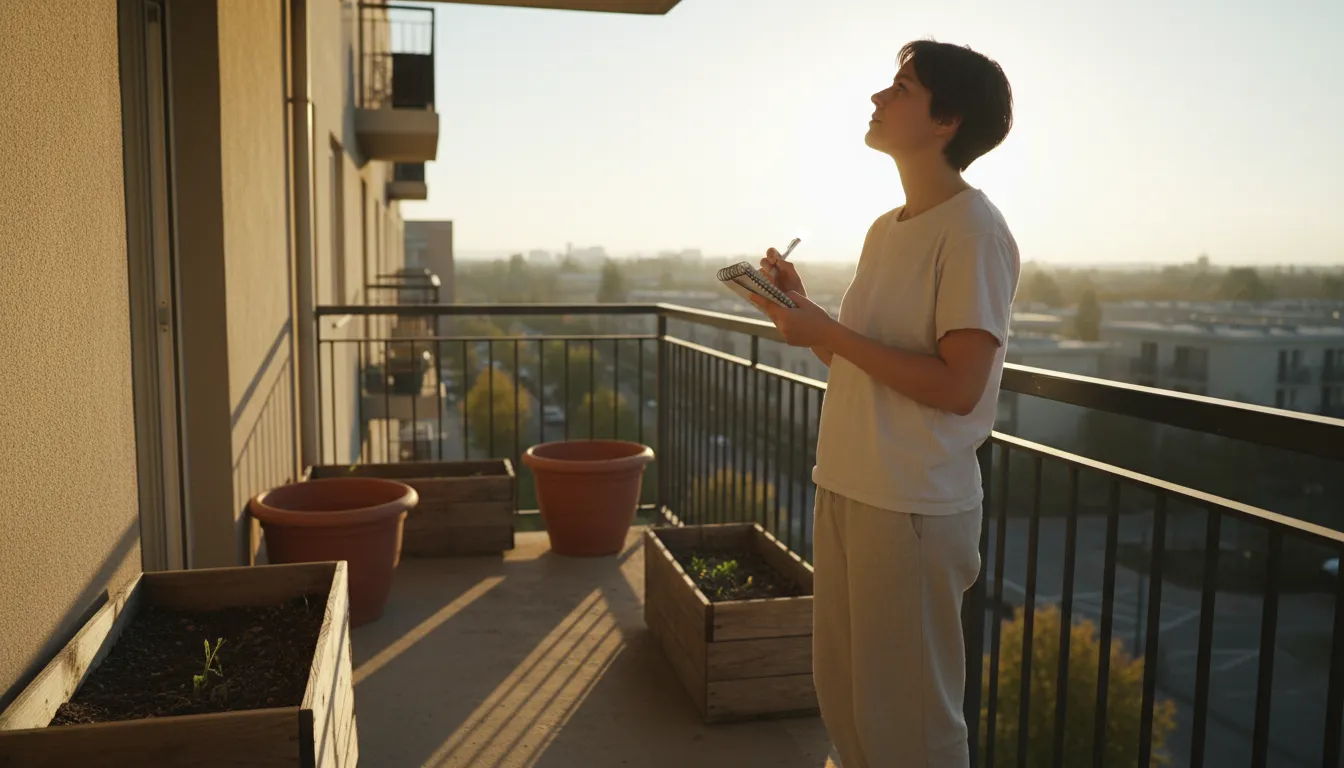
Underestimating Your Balcony’s Microclimate
One of the most significant balcony gardening mistakes beginners always make involves misjudging the specific conditions on their balcony. Your balcony acts as a unique microclimate, a small area with distinct environmental conditions different from your backyard or a community garden plot. Factors like sunlight, wind exposure, and temperature fluctuations significantly impact plant health. Ignoring these specifics leads to common container plant problems.
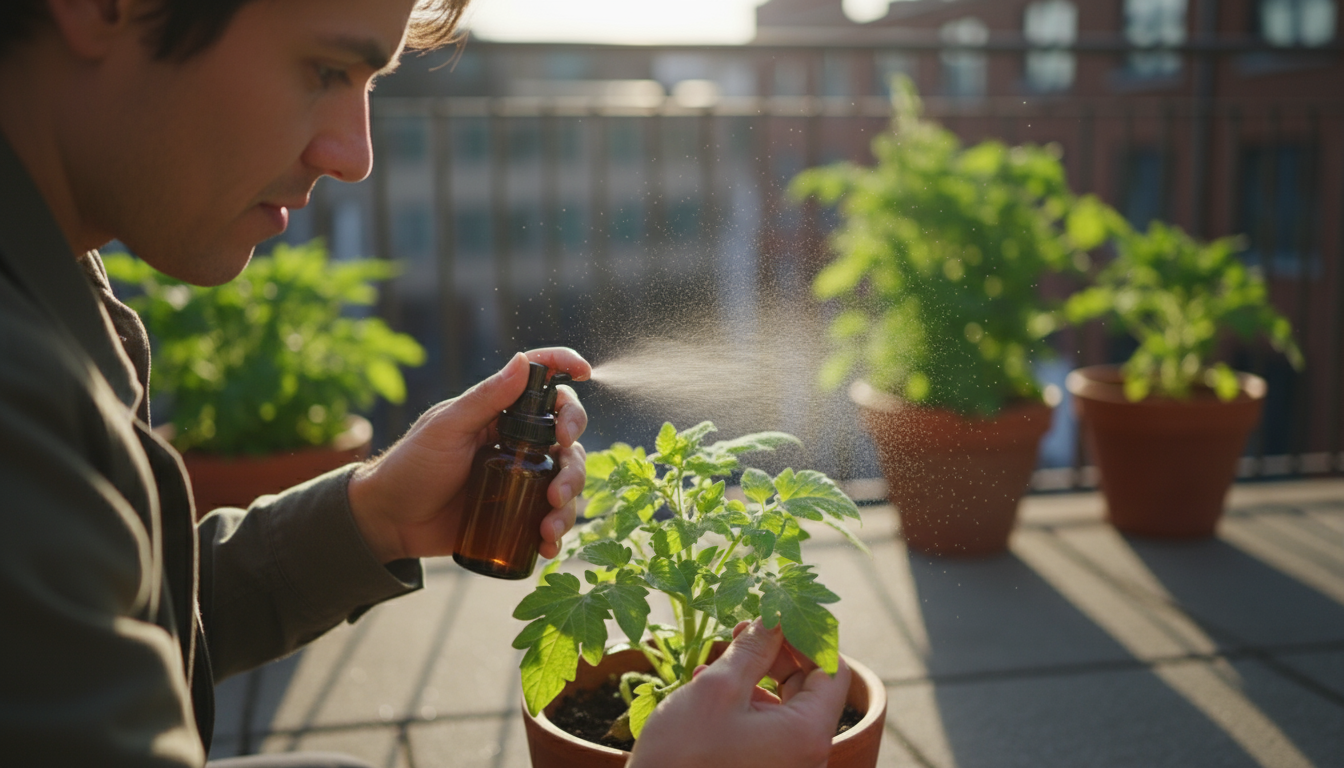
Sunlight: The Ultimate Balcony Dictator
Sunlight is the primary energy source for most plants. Before you buy a single plant, spend several days, or even a week, observing your balcony’s sun exposure. Note exactly how many hours of direct sunlight different areas receive. A “full sun” plant requires at least six hours of direct sun daily. A “part sun” plant needs three to six hours, and “shade” plants thrive on less than three hours, often preferring indirect light or morning sun. Many balconies, especially those facing east or west, receive intense morning or afternoon sun, while north-facing balconies may get little to no direct light. South-facing balconies often receive the most sun, but this also brings intense heat. Direct sunlight can also be magnified by reflective surfaces like glass or light-colored walls, effectively increasing the heat and light intensity beyond what a plant might tolerate in an open garden.
Failing to match a plant’s light requirements to your balcony’s reality creates immediate issues. Sun-loving plants will stretch and become leggy, producing few flowers or fruits, if they do not get enough light. Shade-loving plants, on the other hand, will scorch and wilt under too much direct sun, developing yellow or brown leaves. Consider your specific balcony orientation and any obstructions like adjacent buildings or trees that cast shadows. You can even use a simple sun calculator app on your phone to track precise sun exposure over time. This crucial step prevents many common container plant problems.
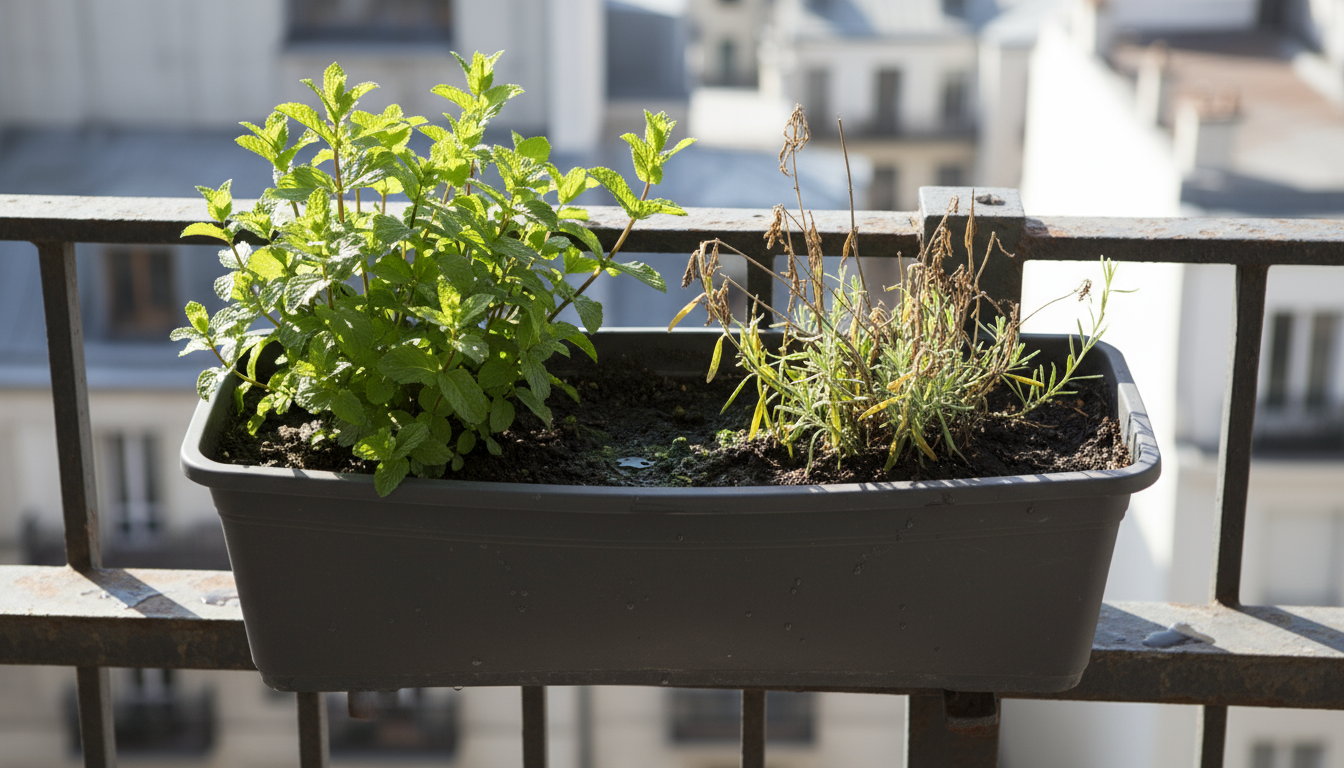
Wind: The Silent Destroyer
Balconies, particularly those on higher floors or in urban canyons, often experience strong winds. Wind significantly impacts plants by physically damaging foliage and stems, knocking over containers, and accelerating water loss through a process called transpiration. Transpiration is how plants release water vapor through their leaves. High winds strip away this humid air around the leaves, causing the plant to pull more water from its roots and lose it faster. This rapid water loss, known as desiccation, stresses plants and makes them more susceptible to drying out quickly, even if you water regularly.
Signs of wind stress include torn leaves, stunted growth on the windward side, and soil that dries out within hours of watering. You can mitigate wind effects by using sturdy, heavy containers that resist tipping. Position plants closer to a solid wall or railing for some protection. Consider creating windbreaks using trellises, privacy screens, or larger, more resilient plants strategically placed to buffer smaller, delicate ones. Choosing plants with flexible stems and smaller leaves also helps them withstand windy conditions better.
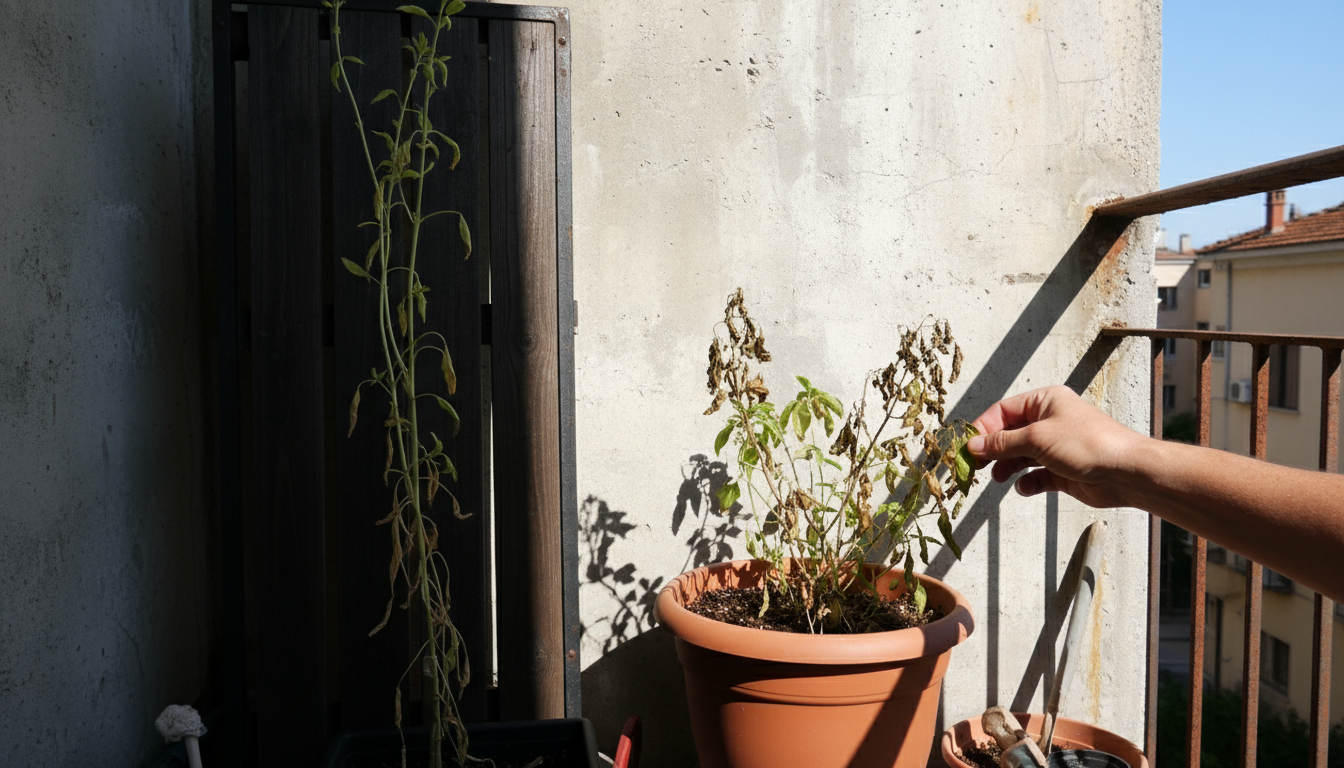
Temperature Fluctuations: Hot Spots and Cold Pockets
Balconies often experience more extreme temperature swings than ground-level gardens. Concrete and brick surfaces absorb heat during the day and radiate it back at night, creating hotter microclimates. This can be beneficial in cooler seasons, but in summer, it means plants endure intense heat stress. The radiating heat can bake roots in containers, especially those made of dark materials, leading to wilting and root damage. Conversely, balconies are also more exposed to cold winds and can experience lower temperatures during frosty periods, making plants vulnerable to cold damage.
Monitor your balcony’s temperature extremes. On hot days, move heat-sensitive plants into shadier spots or provide temporary shade with umbrellas. Choose light-colored containers to reflect heat away from roots. During cold snaps, bring tender plants indoors if possible, or protect them with frost blankets. Understanding these temperature variations helps you select heat-tolerant or cold-hardy plants, depending on your local climate and balcony conditions.
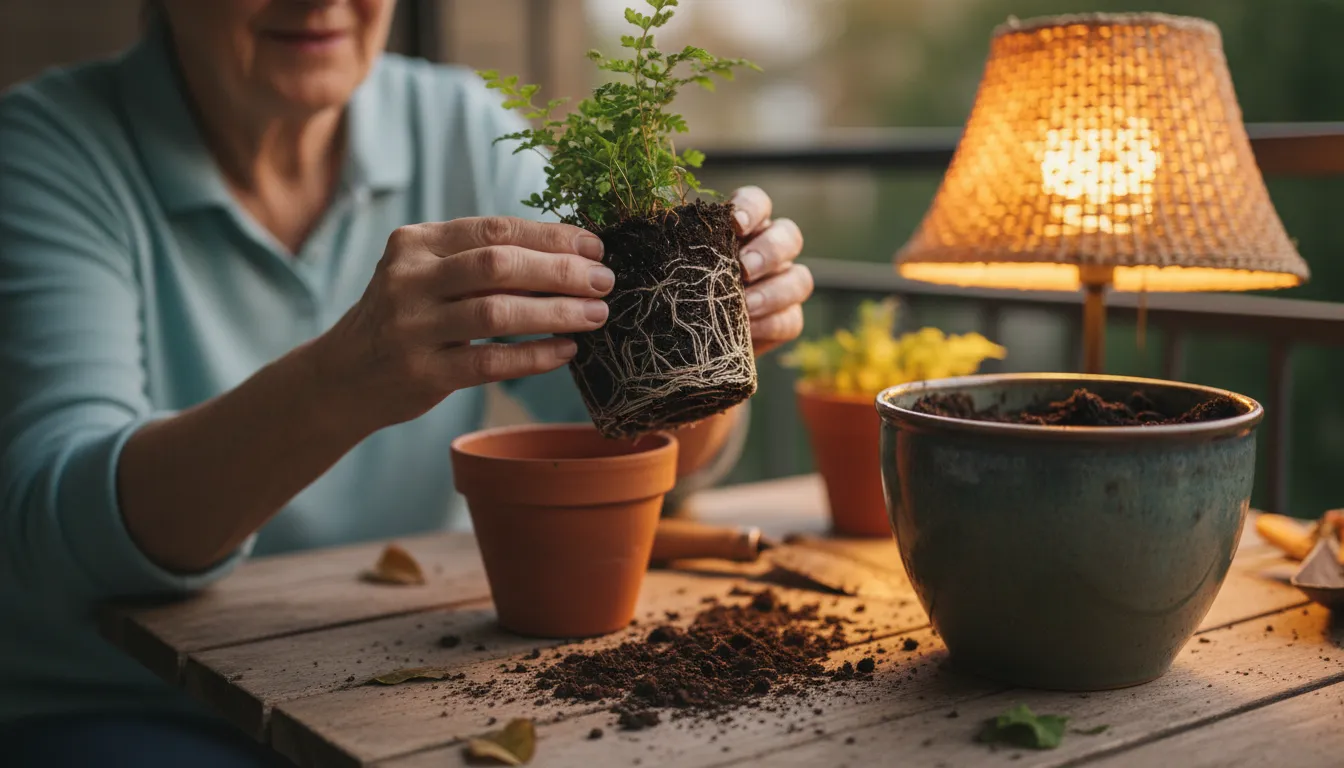
Choosing the Wrong Containers and Soil
Your containers and the soil you fill them with are fundamental to balcony gardening success. Many beginner balcony gardeners make critical errors here, leading to poor plant health and frustrating container plant problems. Selecting the right vessel and growing medium is not just about aesthetics; it is about providing the best environment for your plant’s roots.
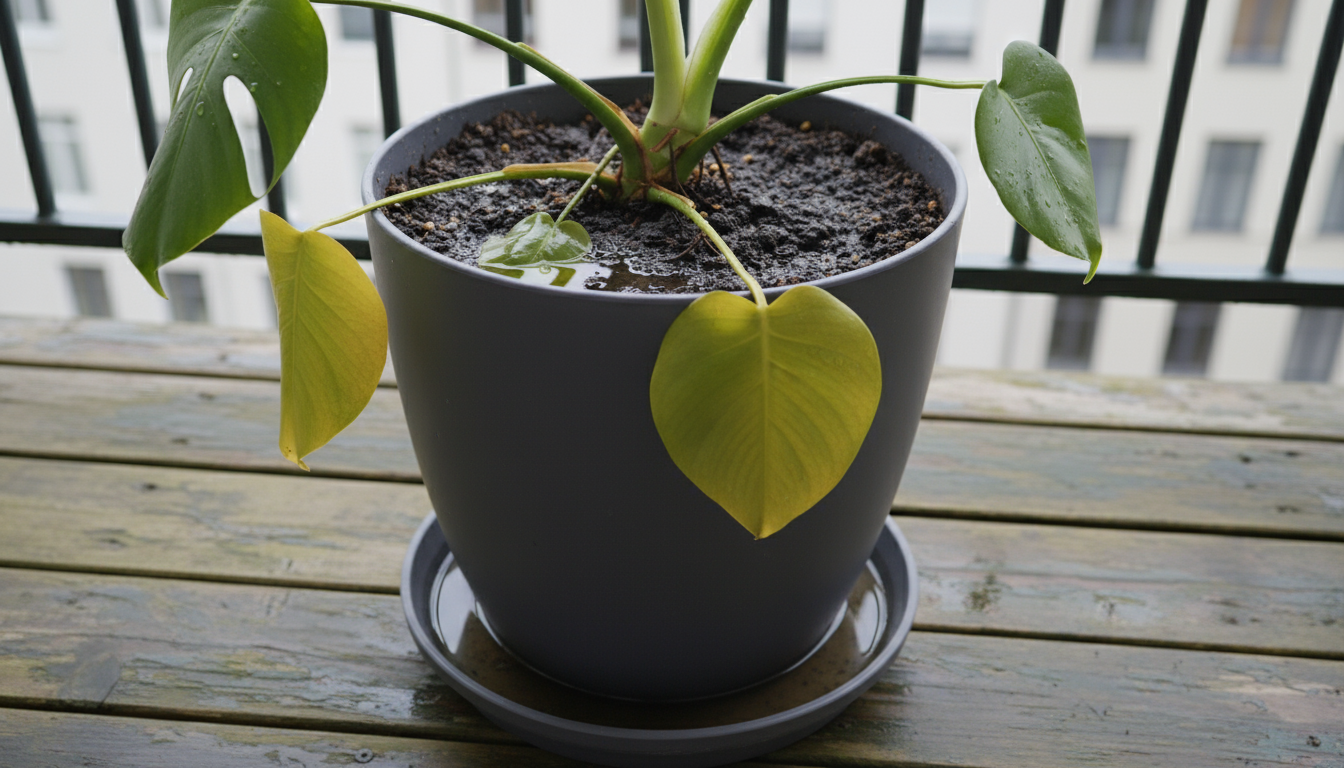
Container Size: Bigger is Often Better
A common mistake is selecting containers that are too small for the plants you want to grow. Plants need adequate space for their roots to spread, anchor, and access nutrients and water. When a plant outgrows its container, it becomes “root-bound,” meaning its roots fill the pot entirely, circling around themselves. Root-bound plants struggle to absorb water and nutrients efficiently, leading to stunted growth, wilting, and reduced yields. They dry out very quickly, requiring constant watering.
Always choose containers that allow for future growth. A general rule of thumb: If you are transplanting a plant, select a new container that is at least 1-2 inches larger in diameter and depth than its previous home. For mature plants, especially vegetables like tomatoes or peppers, opt for containers that are at least 15-20 inches in diameter and depth. Herb gardens can thrive in smaller pots, but even they benefit from room to expand. Remember, bigger pots hold more soil, which retains more moisture and offers more stable temperatures for roots.
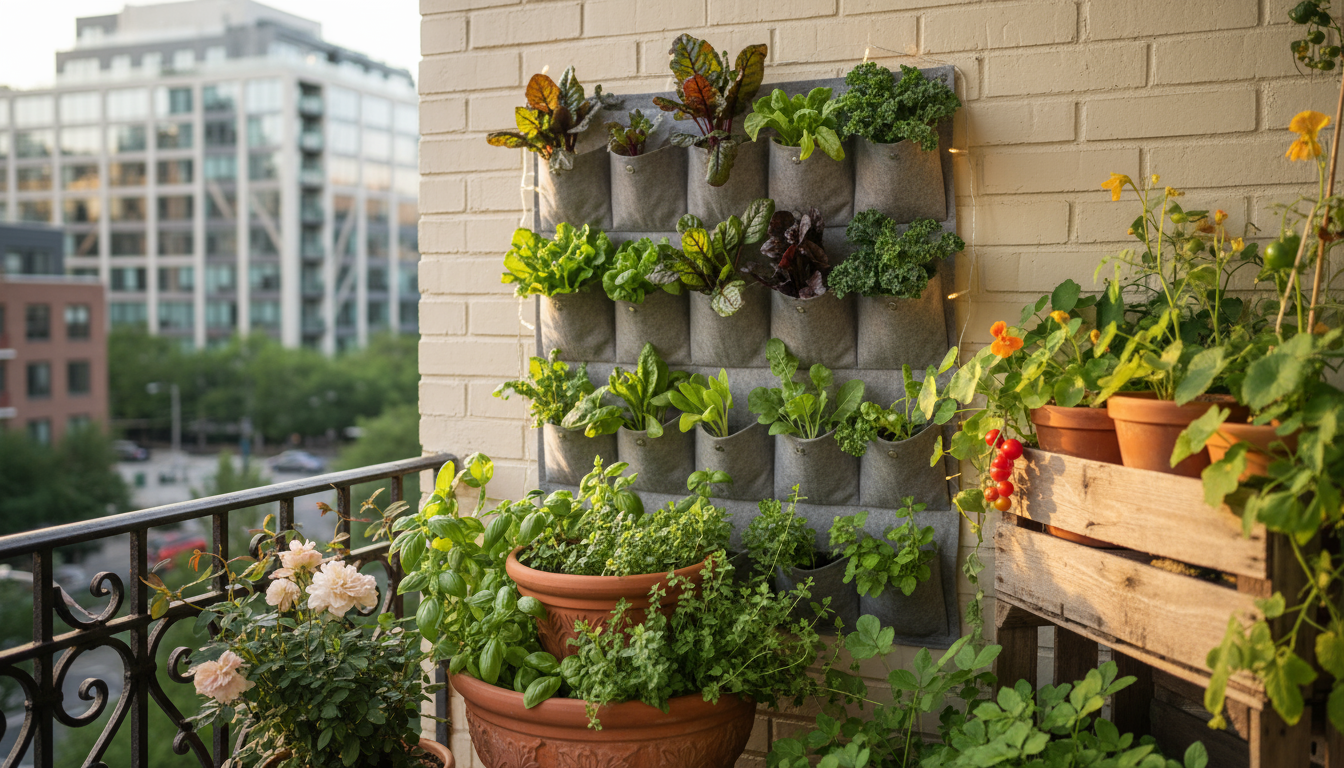
Drainage Holes: Non-Negotiable
This point seems obvious, yet it remains one of the most frequent balcony gardening mistakes. Every single container you use must have drainage holes at the bottom. Drainage is how excess water moves through the soil and out of the pot. Without drainage holes, water accumulates at the bottom of the container, suffocating plant roots. This leads to root rot, a fungal disease that causes roots to turn mushy and black, preventing them from taking up water and nutrients. Root rot quickly kills plants. While you might try to compensate by watering less, it is impossible to gauge the exact moisture level at the bottom of a sealed pot.
If a beautiful pot lacks drainage, drill holes into it yourself using an appropriate drill bit, or use it as a decorative “cachepot” by placing a plant in a smaller, functional pot with drainage inside. Ensure that the inner pot sits on risers or pebbles to prevent it from sitting in standing water at the bottom of the cachepot. Never put a layer of gravel at the bottom of a pot with drainage holes, as this actually impedes drainage and creates a “perched water table” where water accumulates just above the gravel layer.
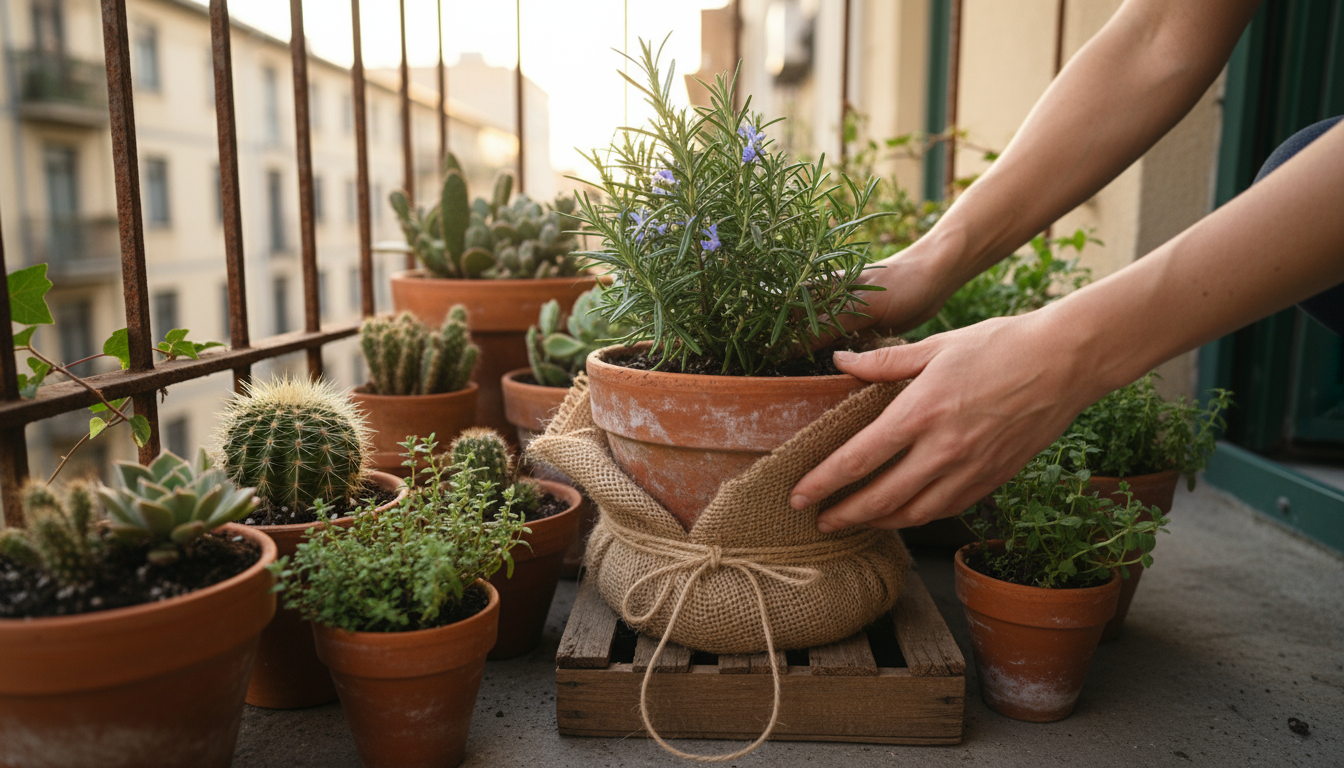
* Loving how these diverse planters are bringing so much life to this sunny urban balcony!
* Proof that beautiful container gardens can thrive in any pot on a bright balcony.
* Look at these happy plants rocking their different homes on this sun-drenched balcony!
* This sunlit balcony is showing off some serious style with these vibrant container gardens.
Container Material: Understanding the Differences
The material of your container affects how quickly soil dries out and how much heat roots endure. Each material has pros and cons:
- Terracotta/Clay: These porous pots allow air and moisture to pass through their walls, which means the soil dries out faster. This can be an advantage for plants that prefer drier conditions or for gardeners prone to overwatering. However, in hot, windy conditions, terracotta pots can dry out so rapidly that plants become stressed, requiring frequent watering, sometimes multiple times a day. They also add significant weight.
- Plastic: Non-porous plastic pots retain moisture effectively, reducing the frequency of watering. They are lightweight, durable, and generally inexpensive. However, dark-colored plastic pots can absorb a lot of heat, potentially baking roots in intense sunlight.
- Fabric Grow Bags: Made from breathable fabric, these bags offer excellent aeration, preventing root circling and promoting a healthier root system. They also provide natural drainage. Like terracotta, they can dry out faster than plastic pots, especially in warm, windy environments, but they prevent root-bound issues effectively. They are lightweight and easy to store when empty.
- Wood: Wood containers, like cedar or redwood, offer good insulation against temperature swings and look attractive. They require liners to prevent rot and extend their lifespan.
- Metal: Metal containers can look very modern, but they heat up quickly in the sun, potentially harming roots. You must choose light colors or provide insulation if using metal.
Consider your balcony’s microclimate and your watering habits when choosing container materials. A mix of materials often works best, tailored to specific plant needs.
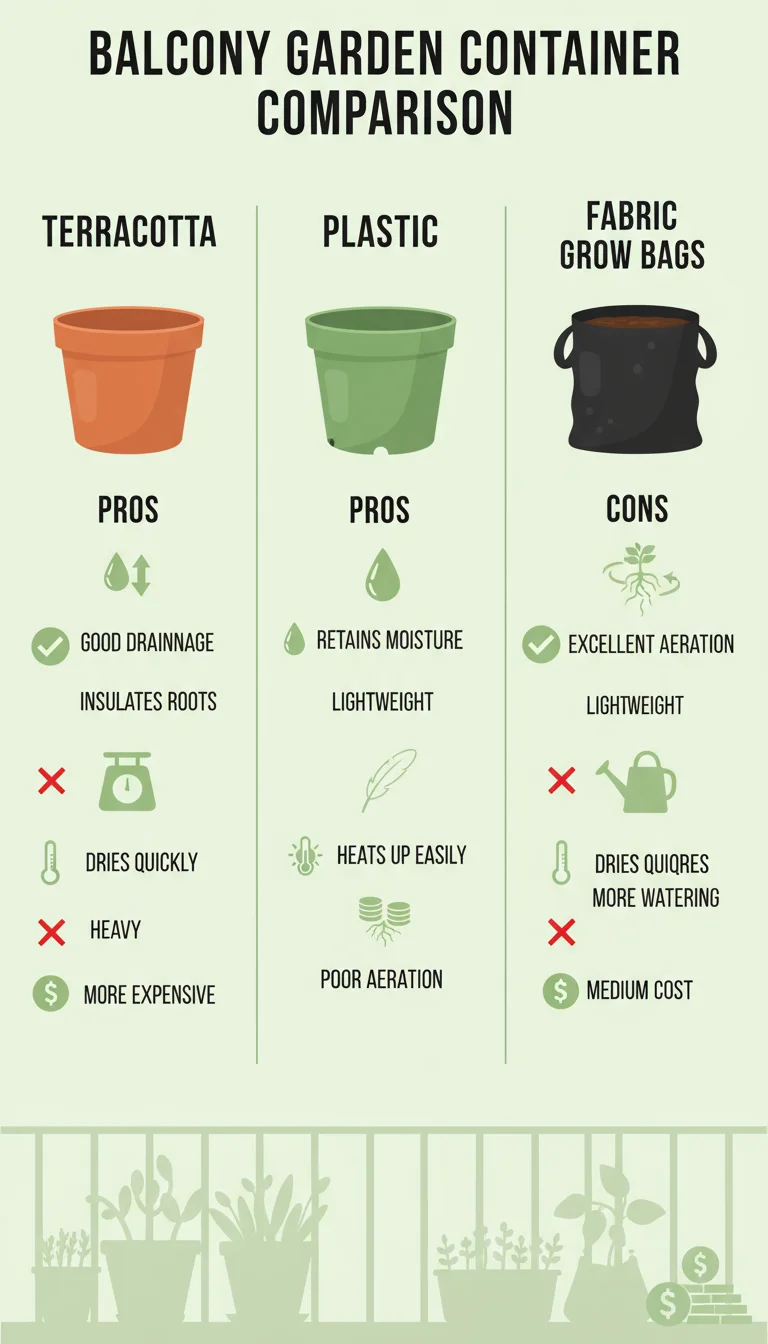
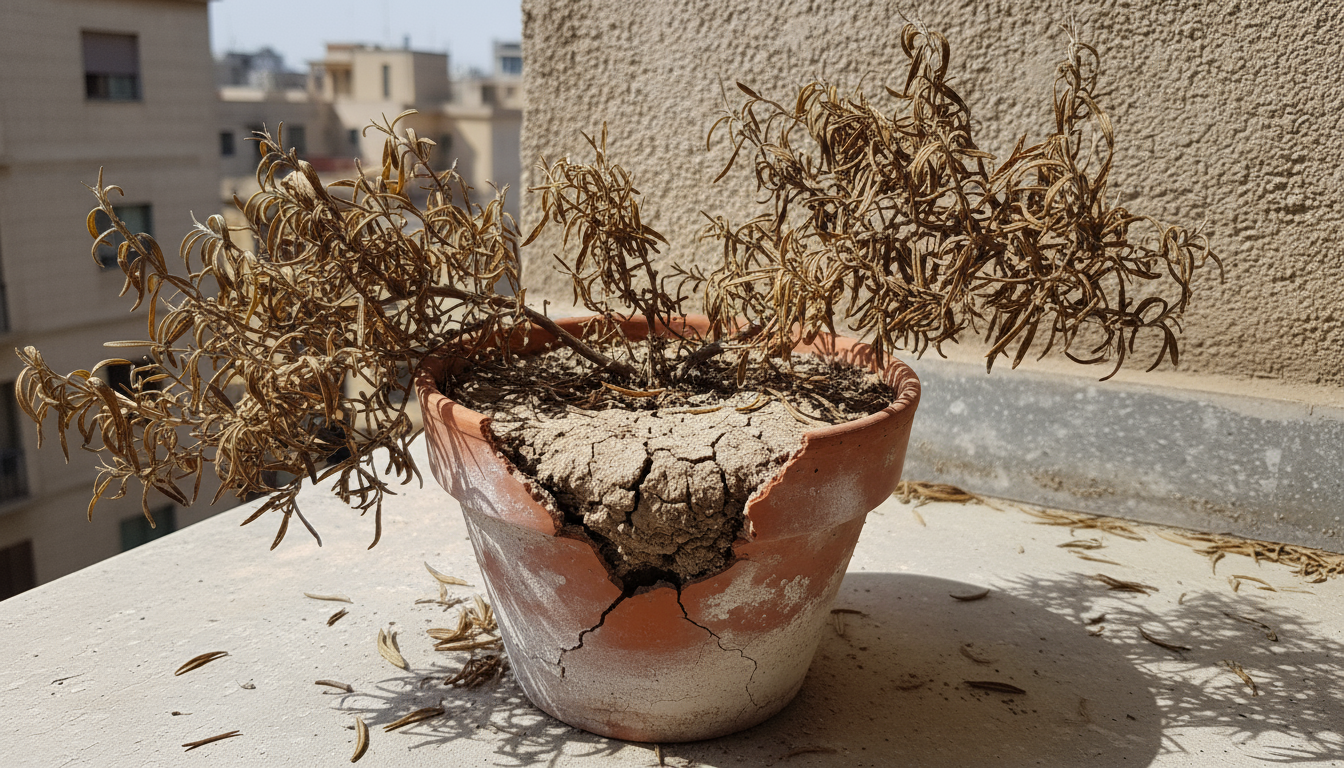
Potting Mix: Not Just Any Soil
This is arguably the most common and damaging of all balcony gardening mistakes. Never use heavy garden soil, topsoil, or soil directly from your yard in containers. Garden soil is designed for in-ground use, where it has access to a vast network of microbes, worms, and drainage pathways. In a confined container, garden soil compacts easily, becomes waterlogged, and lacks the aeration plant roots need. This leads to poor drainage, suffocated roots, and nutrient deficiencies.
Always use a high-quality potting mix (also called potting soil or container mix). Potting mix is a specially formulated blend of ingredients designed for container gardening. It typically contains:
- Peat Moss or Coco Coir: These materials retain moisture and nutrients while providing structure.
- Perlite or Vermiculite: These lightweight, porous materials improve drainage and aeration, preventing compaction.
- Compost or Bark Fines: These provide some initial nutrients and beneficial organic matter.
- Wetting Agents: Some mixes include these to help the mix absorb water evenly.
A good potting mix provides excellent drainage, essential for preventing root rot, while also retaining enough moisture to keep plants hydrated. It offers a loose, airy structure that allows roots to breathe and grow freely. Some potting mixes come with slow-release fertilizers already incorporated, providing a steady supply of nutrients for several weeks. Investing in good potting mix is one of the best ways to ensure your balcony garden thrives.

Ignoring Proper Watering Techniques
Watering seems simple, yet improper watering is a leading cause of container plant problems. Both overwatering and underwatering inflict stress, leading to stunted growth, disease, and ultimately, plant death. Balcony gardens, with their specific conditions, require a nuanced approach to hydration.

The Dangers of Overwatering
Overwatering is the number one killer of container plants. When you overwater, the soil becomes saturated, meaning all the air pockets in the potting mix fill with water. Plant roots, like all living organisms, need oxygen to function. When deprived of oxygen, they literally drown and begin to rot. Signs of overwatering include yellowing leaves (often starting from the bottom), wilting despite wet soil, stunted growth, and the development of mold or algae on the soil surface. The soil may also smell foul, indicating root rot.
To avoid overwatering, do not water on a strict schedule. Instead, check the soil moisture before watering. Stick your finger about two inches deep into the potting mix. If it feels moist, wait to water. If it feels dry, it is time to water. You can also use a moisture meter, which provides a numerical reading of soil dampness. When you do water, water thoroughly until you see water draining from the bottom of the pot. This ensures the entire root ball receives moisture. Empty any saucer beneath the pot after 15-30 minutes, as plants sitting in standing water can still develop root rot.
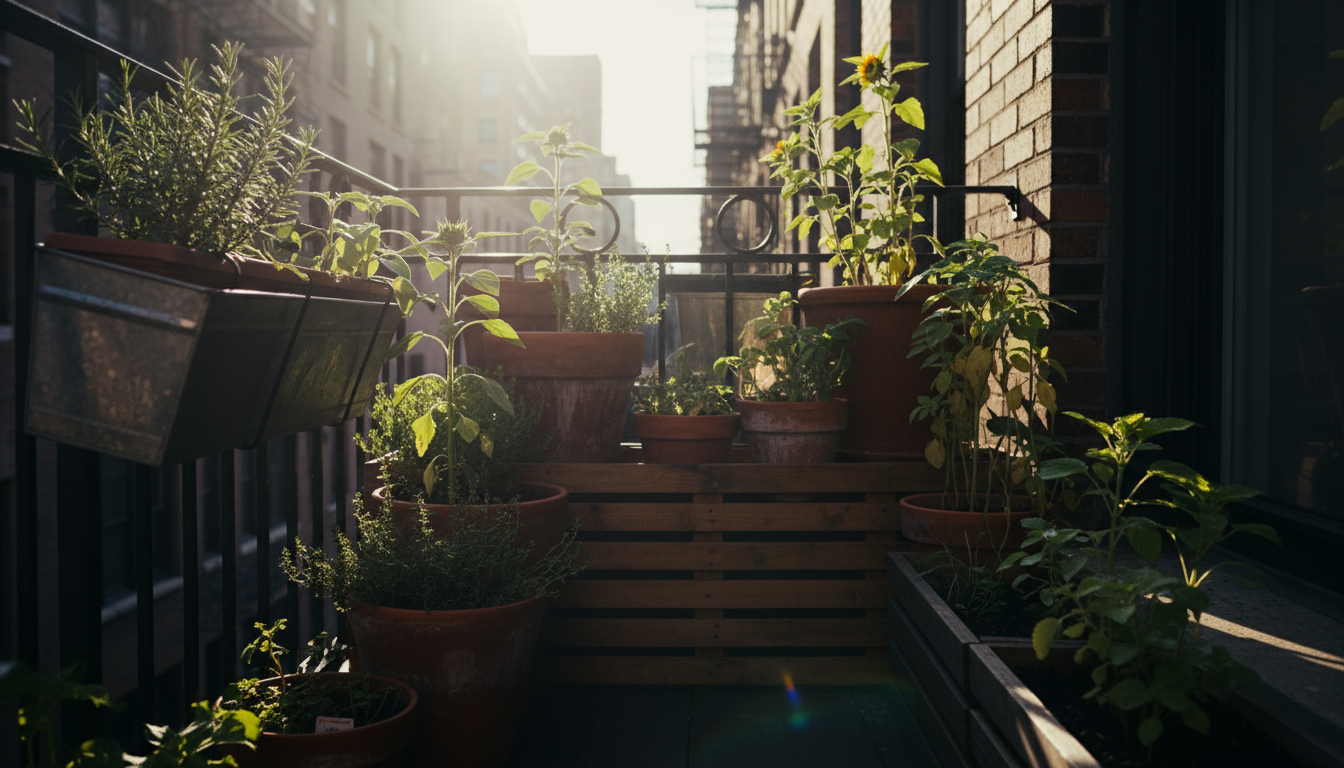
The Consequences of Underwatering
Underwatering, while less common than overwatering in terms of immediate plant death, also causes significant stress. When plants do not receive enough water, their cells lose turgor pressure (the internal water pressure that keeps them rigid), causing them to wilt. Prolonged underwatering leads to stunted growth, crispy brown leaf edges, premature leaf drop, and poor flower or fruit production. The plant effectively shuts down its growth processes to conserve moisture.
Balcony plants, especially in smaller containers or during hot, windy weather, can dry out remarkably fast. Regularly check your plants, especially new transplants or those in terracotta pots. If you find a severely wilted plant due to underwatering, give it a thorough drink. Sometimes, if the soil has become extremely dry, it may repel water. In such cases, soak the entire pot in a basin of water for 30 minutes to an hour until the soil is rehydrated. Most plants recover quickly from temporary wilting due to underwatering, but consistent dehydration weakens them over time.
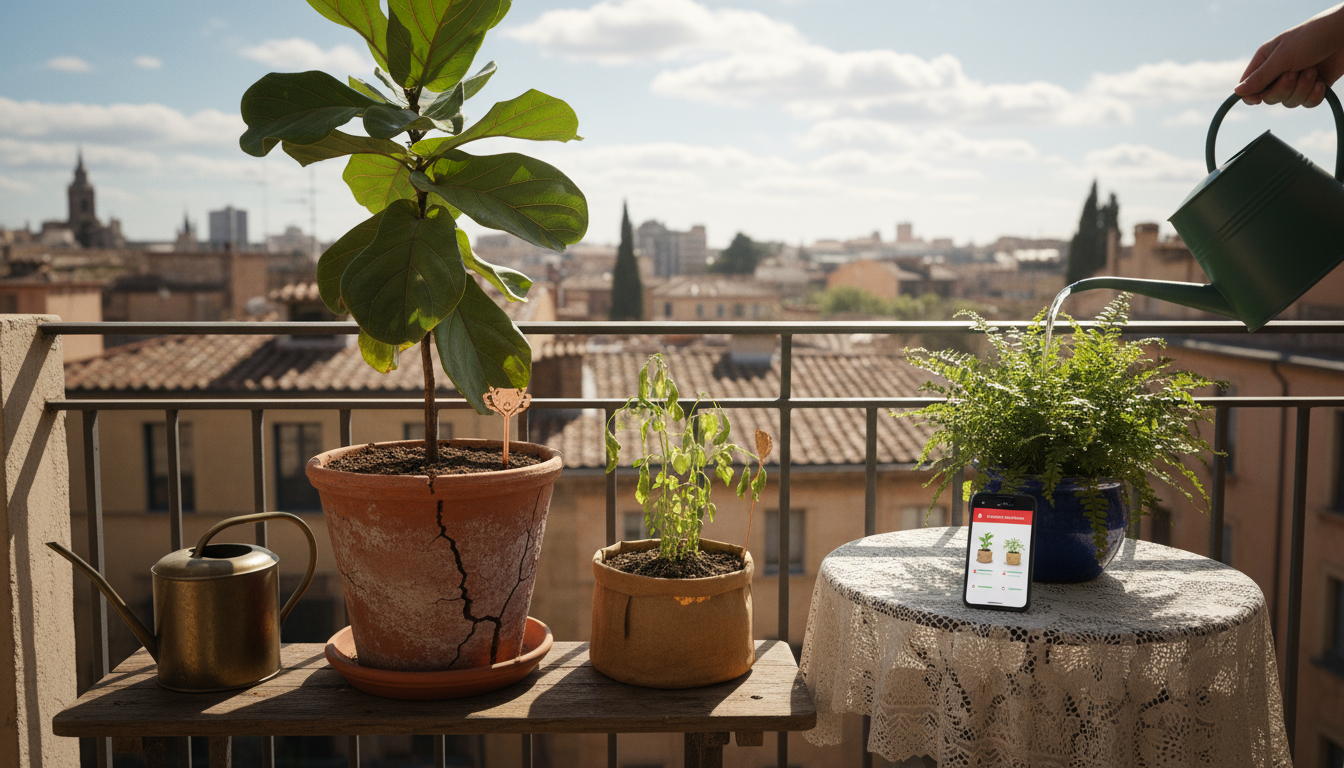
Balcony-Specific Watering Challenges
Your balcony’s microclimate often dictates more frequent watering than a traditional garden. Factors that accelerate drying include:
- Wind: As mentioned, wind rapidly evaporates moisture from leaves and soil.
- Sun Exposure: Intense, direct sun bakes the soil and increases plant water demand.
- Container Material: Terracotta and fabric pots dry out faster than plastic.
- Plant Size: Large plants with extensive root systems in relatively small pots demand more water.
- High Temperatures: Hot ambient temperatures increase evaporation.
Be prepared to adjust your watering frequency based on the weather and your plants’ needs. On a hot, sunny, windy day, you might need to water twice. On a cool, cloudy day, your plants might not need water for several days. Early morning is generally the best time to water, as it allows plants to absorb moisture before the heat of the day, and it reduces evaporation losses. Avoid watering in the evening, as prolonged moisture on leaves can encourage fungal diseases.

Neglecting Plant Nutrition
Garden soil naturally replenishes nutrients through the decomposition of organic matter and the activity of soil microbes. In a confined container, however, your plants are entirely dependent on the nutrients you provide. Potting mix starts with some nutrients, but these deplete quickly, typically within a few weeks to a month. Neglecting to fertilize your balcony plants is a common mistake that leads to weak growth, yellowing leaves, and poor yields.
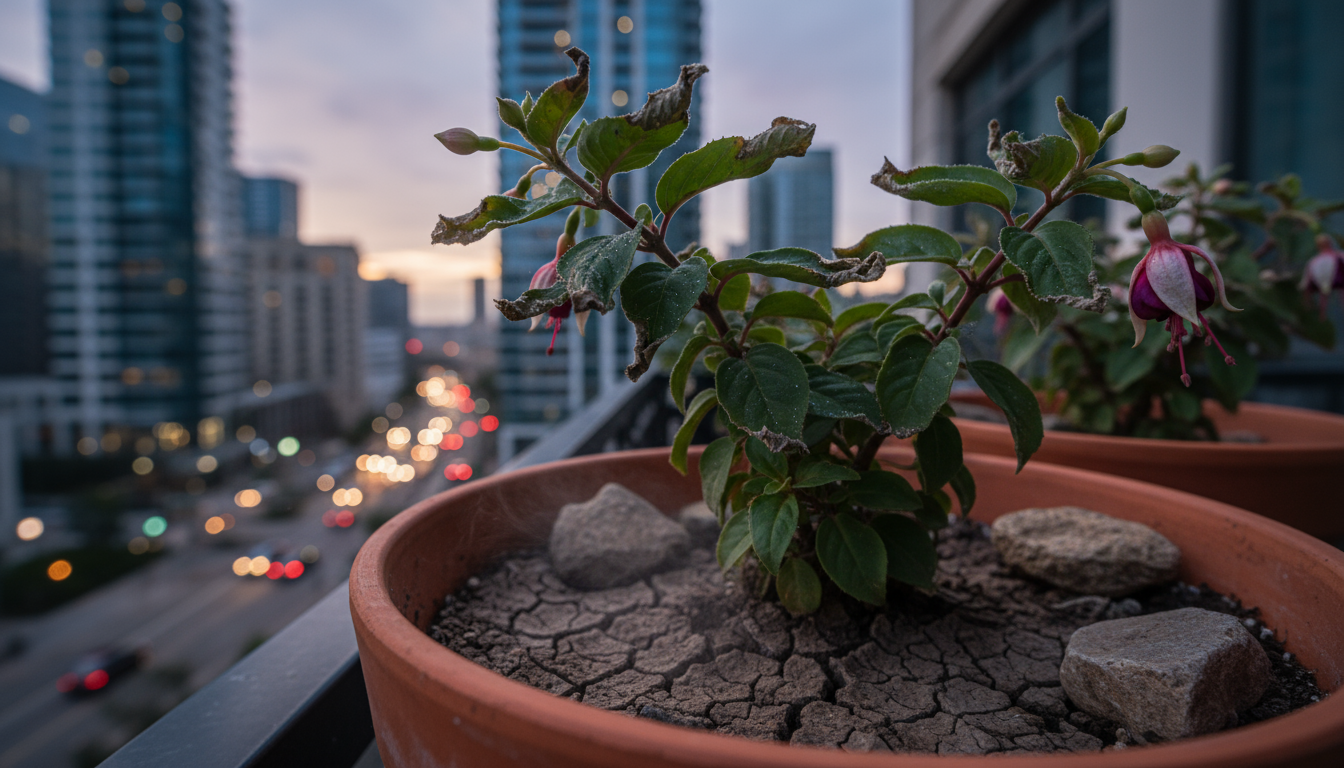
Why Potting Mix Runs Out of Nutrients
Unlike garden soil, potting mix is designed to be lightweight, sterile, and provide excellent drainage. It contains very little, if any, native soil. While some potting mixes come with a “starter charge” of slow-release fertilizer, this supply is finite. As your plants grow, they continuously draw nutrients from the soil to fuel their development, flowering, and fruiting. Each time you water, some nutrients also leach out of the container with the excess water. Without regular replenishment, your plants will starve.
Nutrient deficiencies manifest in various ways: overall yellowing (nitrogen deficiency), purplish discoloration (phosphorus deficiency), yellowing between leaf veins (iron or magnesium deficiency), or general lack of vigor and stunted growth. These container plant problems are easily preventable.
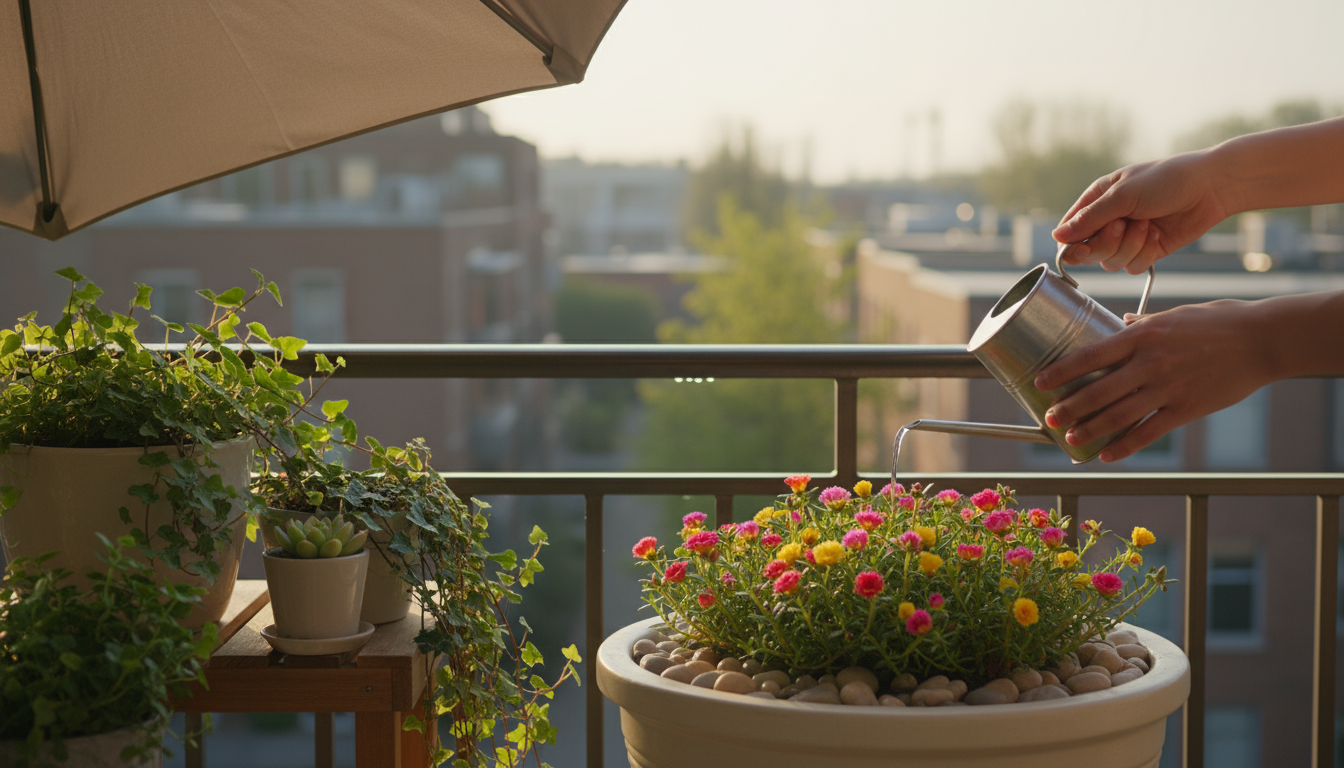
Fertilizer Types and Application
You have several options for providing essential nutrients to your balcony plants:
- Liquid Fertilizers: These are concentrated solutions you dilute with water and apply when you water your plants. They offer immediate nutrient availability, making them great for a quick boost. Apply them every 1-2 weeks, following the product’s dilution instructions carefully.
- Slow-Release Granular Fertilizers: These come in pellet form and are incorporated into the potting mix or sprinkled on top. They release nutrients slowly over several months, often activated by moisture and temperature. This “set it and forget it” approach is excellent for busy gardeners, as it reduces the frequency of feeding.
- Organic Fertilizers: Options like fish emulsion, kelp meal, compost tea, or worm castings provide nutrients in a natural, slow-release form and improve soil health. They may require more frequent application than synthetic slow-release options but are excellent for eco-conscious gardening.
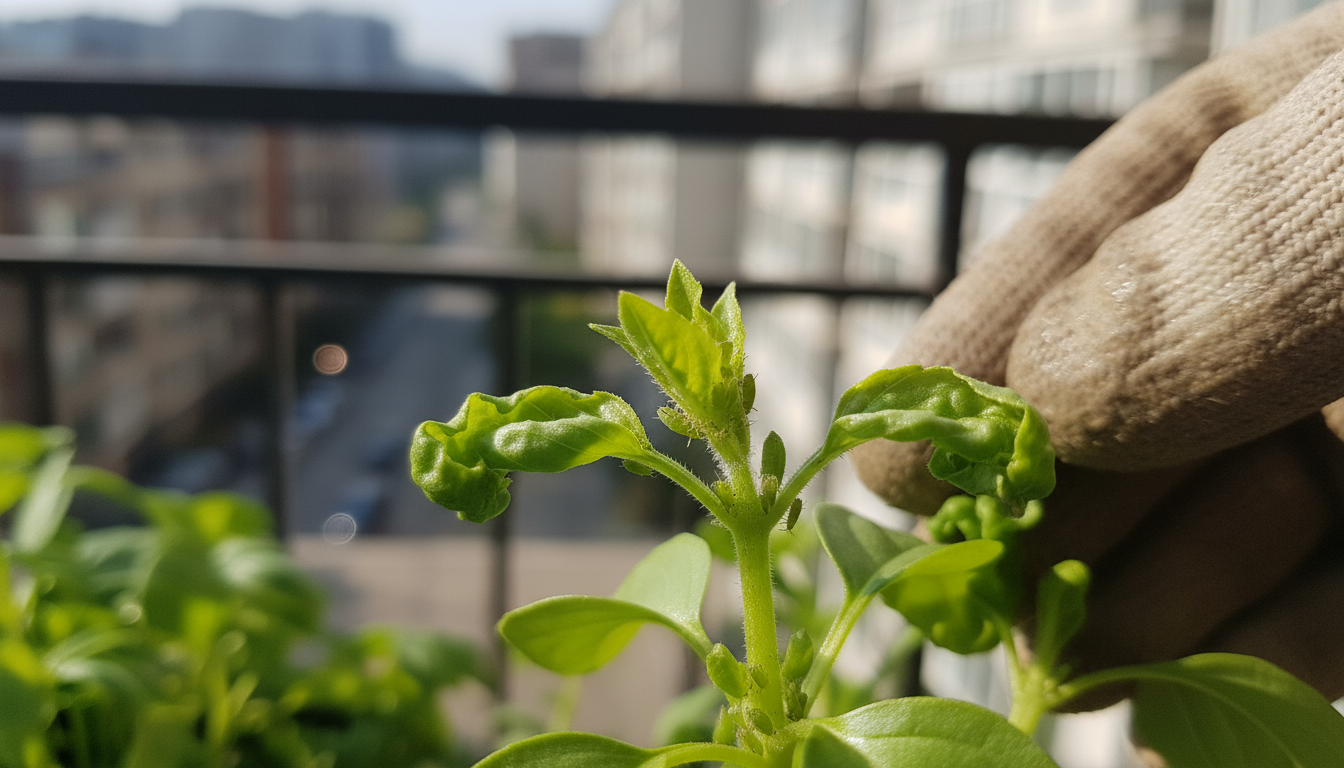
Avoiding Over-Fertilization
While under-fertilizing is common, over-fertilizing is also a significant mistake. Too much fertilizer, especially synthetic kinds, can burn plant roots, leading to brown, crispy leaf edges, wilting, and even plant death. The high salt content in concentrated fertilizers draws moisture out of plant roots. Always follow the product instructions for dilution and application rates. When in doubt, it is better to under-fertilize slightly than to over-fertilize.
A good feeding schedule might involve using a slow-release granular fertilizer at the beginning of the growing season and supplementing with a diluted liquid fertilizer every few weeks, especially for heavy feeders like fruiting vegetables. Observe your plants for signs of nutrient deficiencies or excess, and adjust your feeding regimen accordingly.
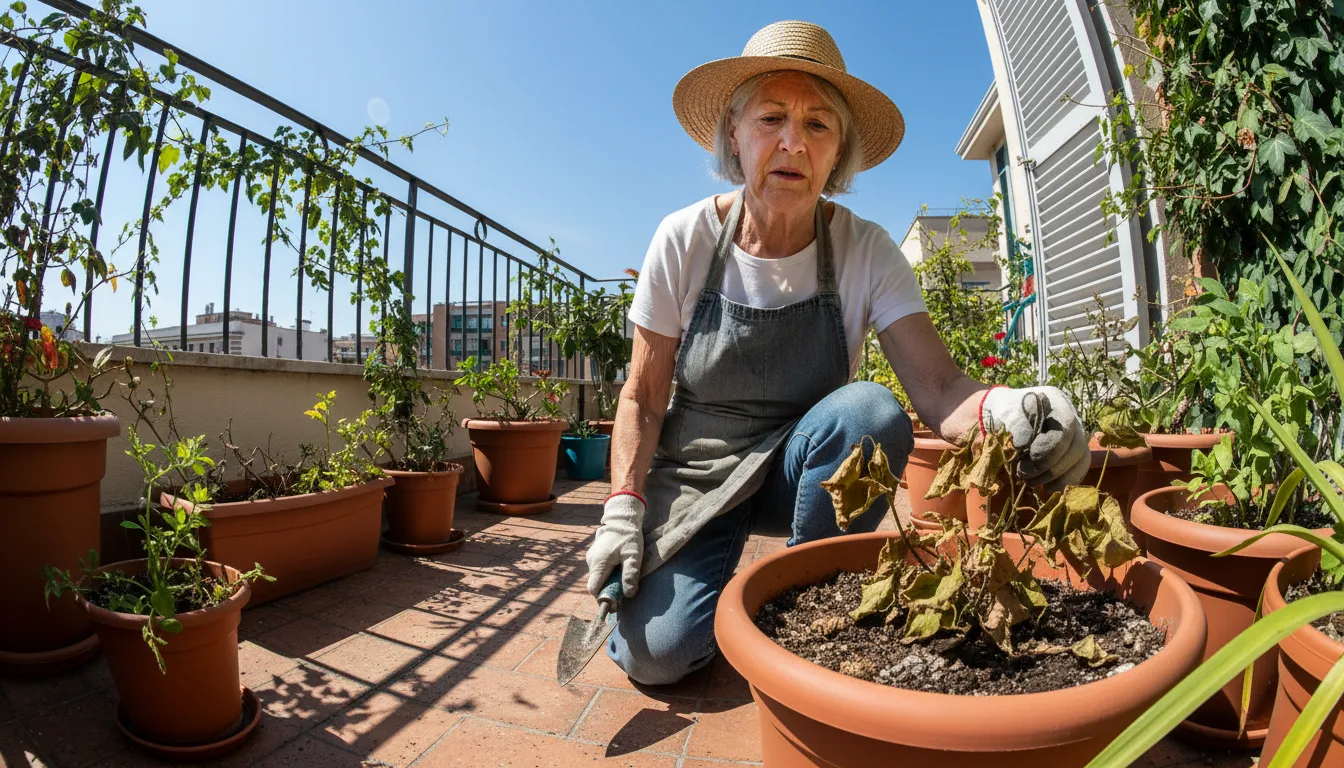
Selecting Unsuitable Plants for Your Space
The excitement of starting a balcony garden often leads beginners to choose plants based solely on their appearance in the nursery, without considering if they are truly suitable for the unique conditions of their balcony. This is one of the most common balcony gardening mistakes and a sure way to encounter container plant problems. Matching plants to your specific environment is crucial for their survival and your enjoyment.
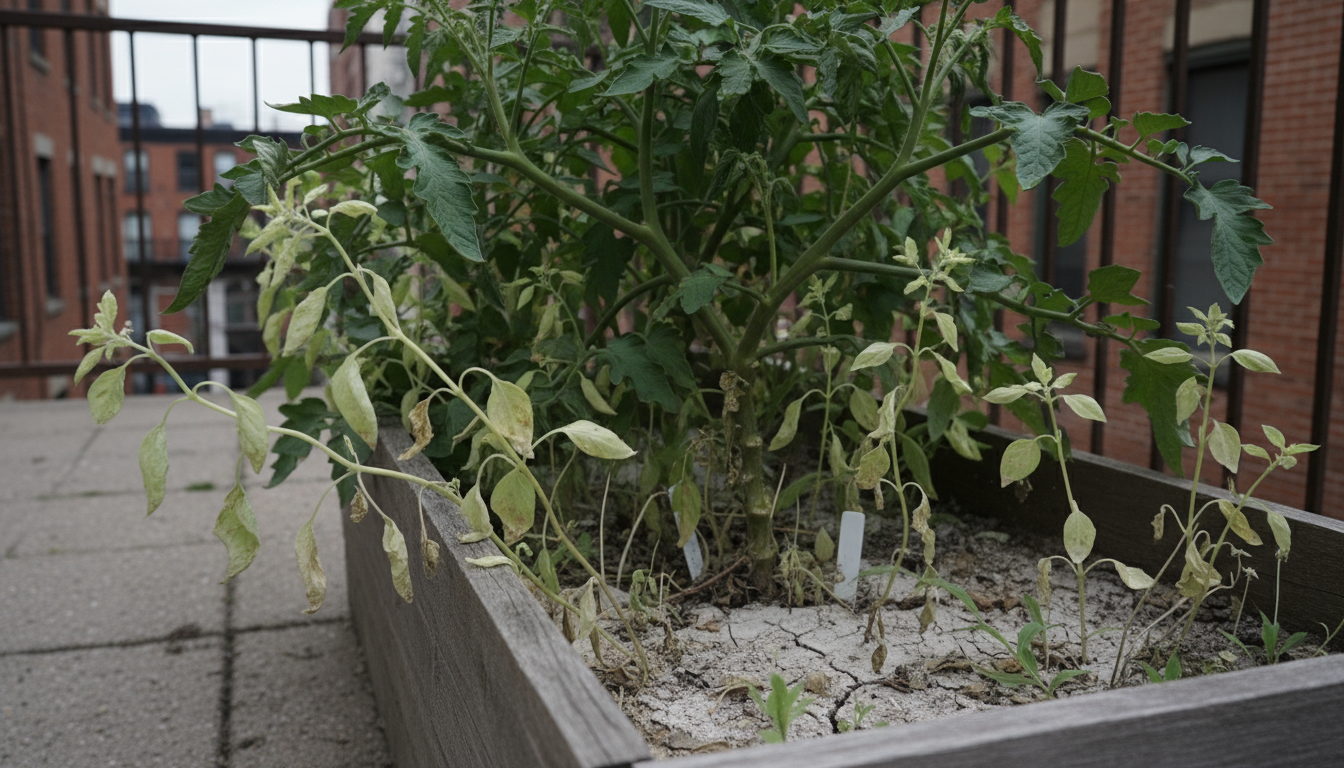
Mismatching Plants to Light Conditions
As discussed, sunlight is paramount. Planting sun-loving tomatoes on a north-facing balcony with only a few hours of indirect light guarantees disappointment. Similarly, placing shade-loving hostas in blistering, full-afternoon sun on a south-facing balcony will result in scorched leaves and a struggling plant. Before purchasing any plant, thoroughly research its light requirements:
- Full Sun: Requires 6+ hours of direct sunlight. Examples: Most vegetables (tomatoes, peppers, beans), many herbs (basil, rosemary), sunflowers, petunias, marigolds.
- Part Sun/Part Shade: Needs 3-6 hours of direct sun, often preferring morning sun and afternoon shade. Examples: Lettuce, spinach, many herbs (mint, parsley), impatiens, fuchsias.
- Full Shade: Thrives with less than 3 hours of direct sun, preferring bright indirect light. Examples: Ferns, coleus, impatiens (certain varieties), some hostas.
Identify your balcony’s light zones first. Then, select plants that fit those zones. Do not try to force a plant to adapt to conditions it inherently dislikes; it will always be an uphill battle.
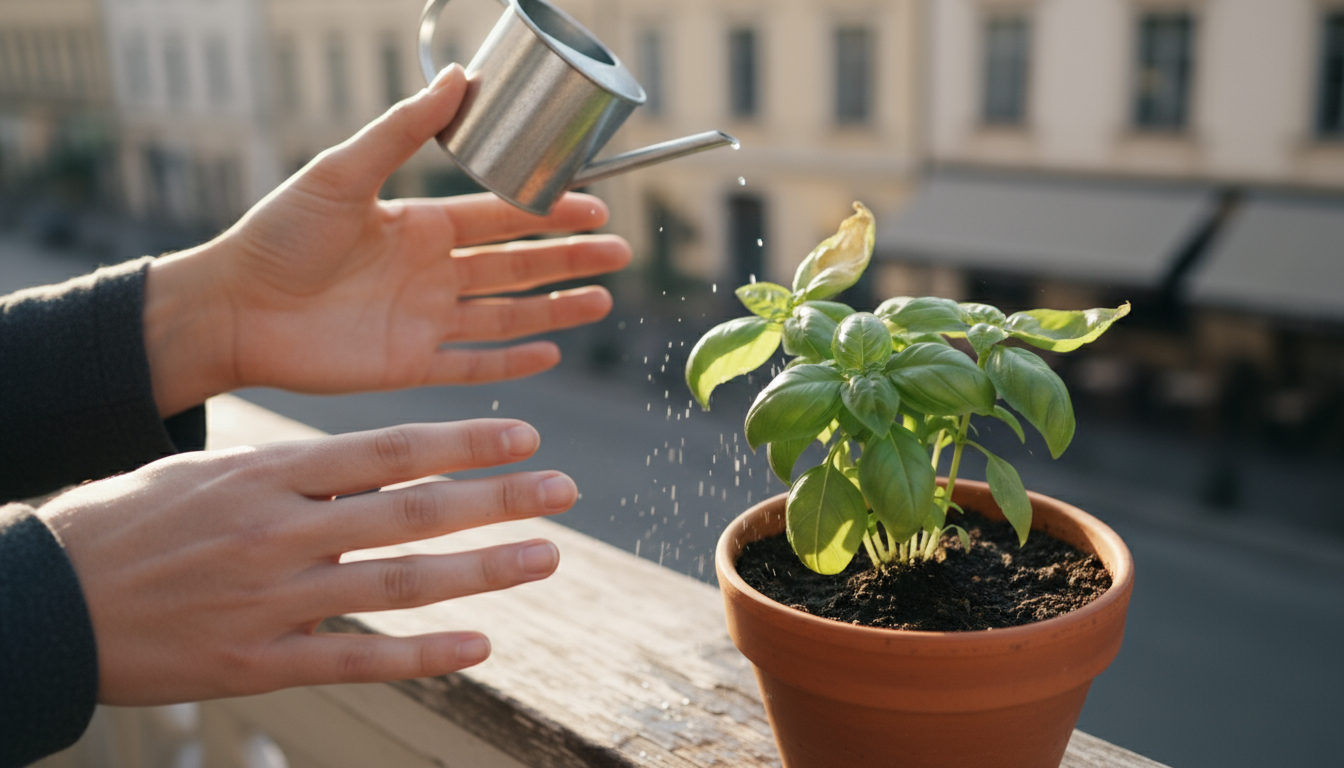
Ignoring Mature Plant Size
Another frequent error is underestimating how large a plant will grow. A small seedling in a nursery pot looks harmless, but many plants quickly outgrow their initial size. A “bush” variety of tomato can still become a sprawling plant that overwhelms a small balcony. A dwarf citrus tree might eventually require a massive container and take up significant space. Overcrowding, which we will discuss further, directly impacts plant health.
Always check the plant label or do a quick online search for the plant’s mature size, both in height and width. For balcony gardens, prioritize dwarf, compact, or determinate varieties of vegetables and fruits. These are bred to stay smaller and are better suited for container living. For vining plants, ensure you have adequate vertical support, like a trellis or cage, and factor its size into your overall layout.
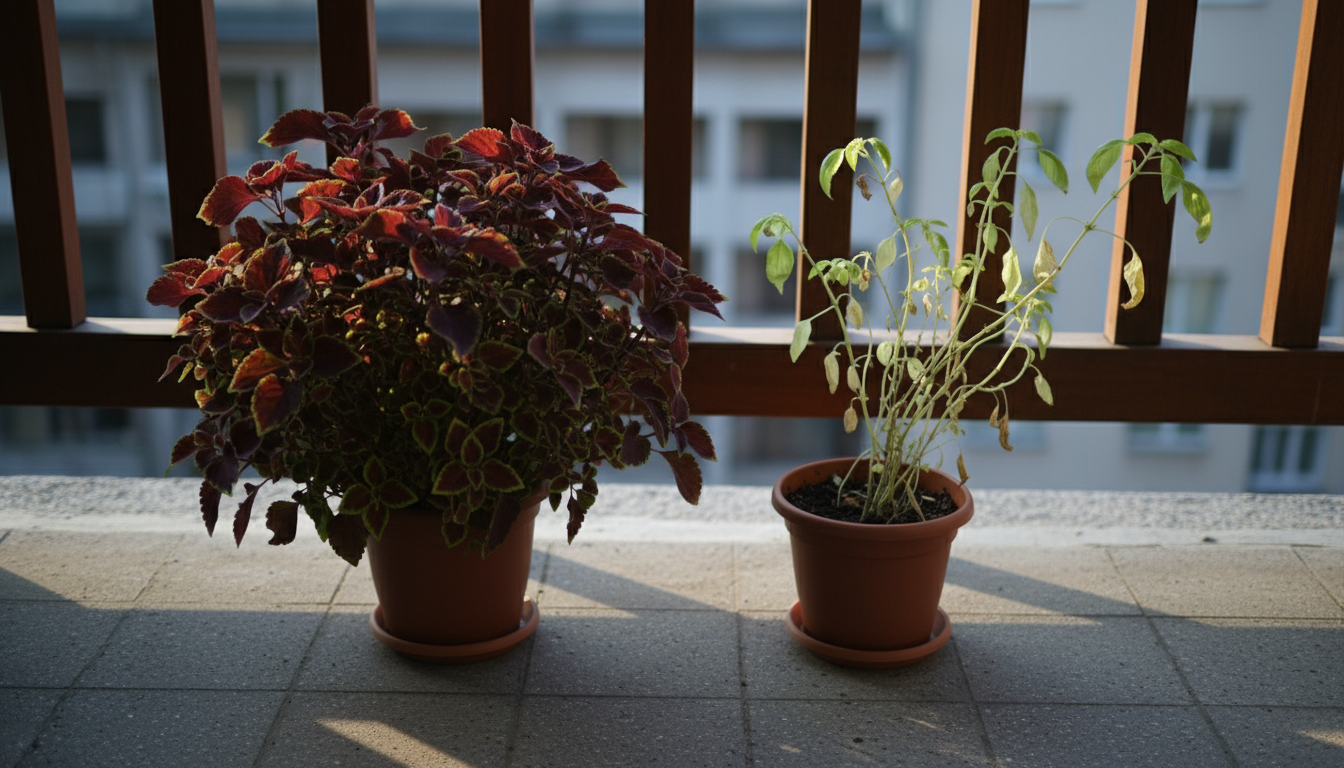
Considering Water and Nutrient Needs Compatibility
If you plan to group multiple plants in one large container or planter box, ensure they have similar water and nutrient requirements. Pairing a drought-tolerant succulent with a water-loving fern in the same pot is a recipe for disaster. One will be overwatered, and the other underwatered. Grouping plants with similar needs simplifies your watering routine and ensures each plant receives appropriate care.
For example, if you are creating an herb garden, consider placing Mediterranean herbs like rosemary, thyme, and lavender (which prefer drier conditions) in one container, and moisture-loving herbs like mint, parsley, and basil in another. This thoughtful grouping prevents many common container plant problems.

Overlooking Pest and Disease Prevention
Even in a small balcony garden, pests and diseases can quickly become a problem, spreading rapidly among confined plants. Many beginner balcony gardeners overlook proactive prevention, waiting until an infestation or disease outbreak is severe before taking action. Early detection and prevention are key to maintaining a healthy garden without resorting to harsh chemicals.
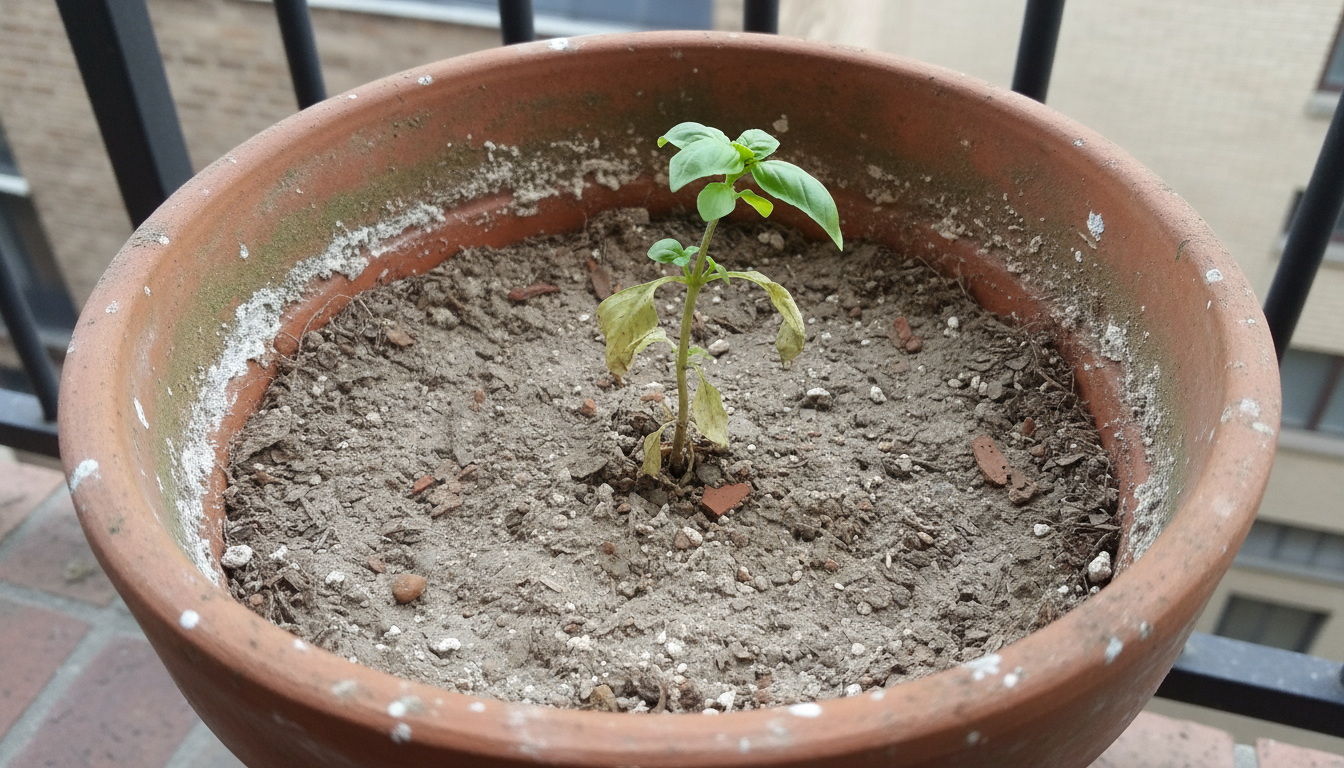
Common Balcony Pests
Balcony plants are susceptible to many of the same pests as in-ground gardens, but their proximity can make infestations more concentrated. Common culprits include:
- Aphids: Small, soft-bodied insects that cluster on new growth and suck plant saps, causing distorted leaves and stunted growth. They often leave behind sticky honeydew.
- Spider Mites: Tiny arachnids that are hard to see with the naked eye. They cause stippling (tiny dots) on leaves and fine webbing, especially on the undersides of leaves. They thrive in hot, dry conditions.
- Whiteflies: Small, white, moth-like insects that fly up in a cloud when disturbed. They also suck plant sap and produce honeydew.
- Mealybugs: White, cottony pests that cluster in leaf axils and on stems, sucking plant sap.
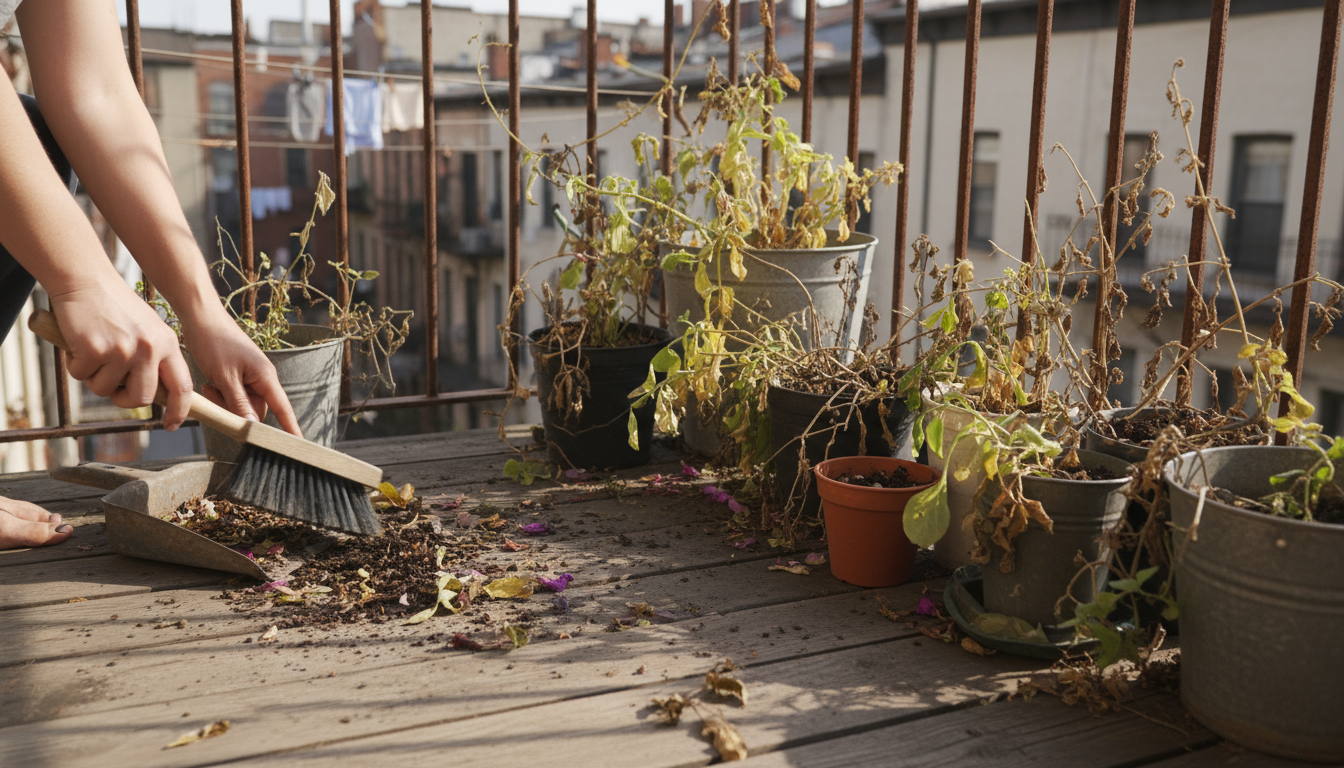
Prevention is Your Best Defense
Proactive measures are far more effective than reactive treatments. Integrate these practices into your routine to prevent pest and disease outbreaks:
- Inspect New Plants: Before bringing any new plant onto your balcony, thoroughly inspect it for signs of pests or disease. Check the undersides of leaves, stems, and the soil surface. Isolate new plants for a week or two to ensure they are clean before introducing them to your existing collection.
- Good Air Circulation: Overcrowded plants and dense foliage create humid, stagnant conditions that pests and diseases love. Ensure adequate spacing between containers and prune plants to improve airflow through their canopy.
- Healthy Plants: Strong, healthy plants are more resistant to pests and diseases. Provide proper watering, nutrition, and light, as stressed plants are more vulnerable.
- Cleanliness: Remove any dead or decaying leaves and flowers from your plants and the container surface. Debris can harbor pests and fungal spores. Regularly clean your containers and gardening tools.
- Strategic Plant Placement: Some plants act as natural pest deterrents. Marigolds, for example, can deter nematodes and other soil pests. Herbs like basil and mint can repel certain insects.
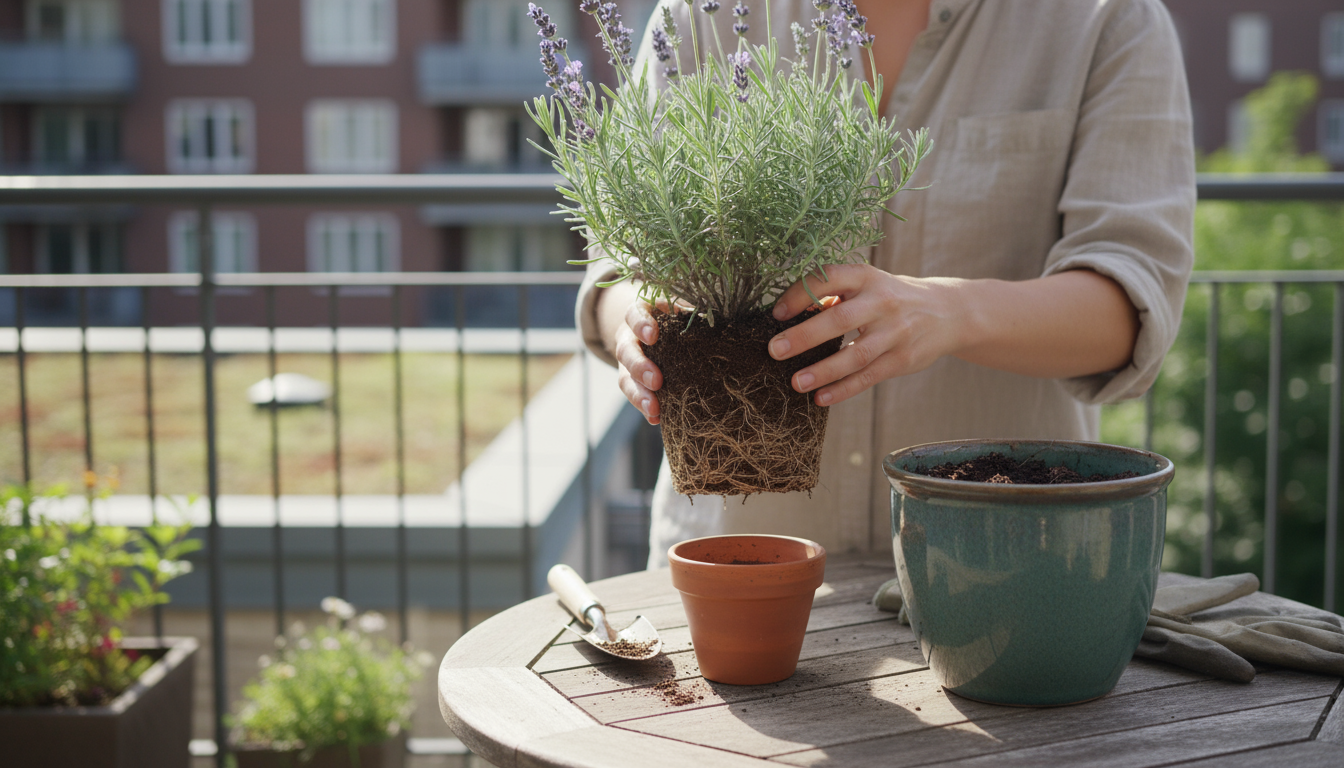
Early Detection and Organic Control
Regularly inspect your plants, ideally once a week. Look for sticky residue, distorted leaves, tiny holes, or the pests themselves. If you spot a problem early, you can often address it simply:
- Hand-picking: For larger pests like caterpillars or slugs, simply pick them off and dispose of them.
- Strong Water Spray: A forceful spray of water from a hose can dislodge aphids and spider mites. Repeat every few days until they are gone.
- Insecticidal Soap: A non-toxic option that works by suffocating soft-bodied insects. Mix with water according to directions and spray thoroughly, especially on the undersides of leaves.
- Neem Oil: An organic pesticide derived from the neem tree. It acts as an insect repellent, growth disruptor, and anti-feedant. It is effective against a wide range of pests. Apply according to instructions, avoiding application in direct sunlight.
- Introduce Beneficial Insects: For persistent problems, consider purchasing beneficial insects like ladybugs, which prey on aphids. Release them in the evening to encourage them to stay.
Addressing pest and disease issues promptly and organically helps maintain a balanced, chemical-free ecosystem on your balcony.

Cramming Too Many Plants into a Small Space
The desire to grow a wide variety of plants in a limited balcony space is understandable, but trying to fit too many plants into a small area is one of the most common balcony gardening mistakes. Overcrowding creates a cascade of problems that ultimately hinder plant growth and health, leading to numerous container plant problems.
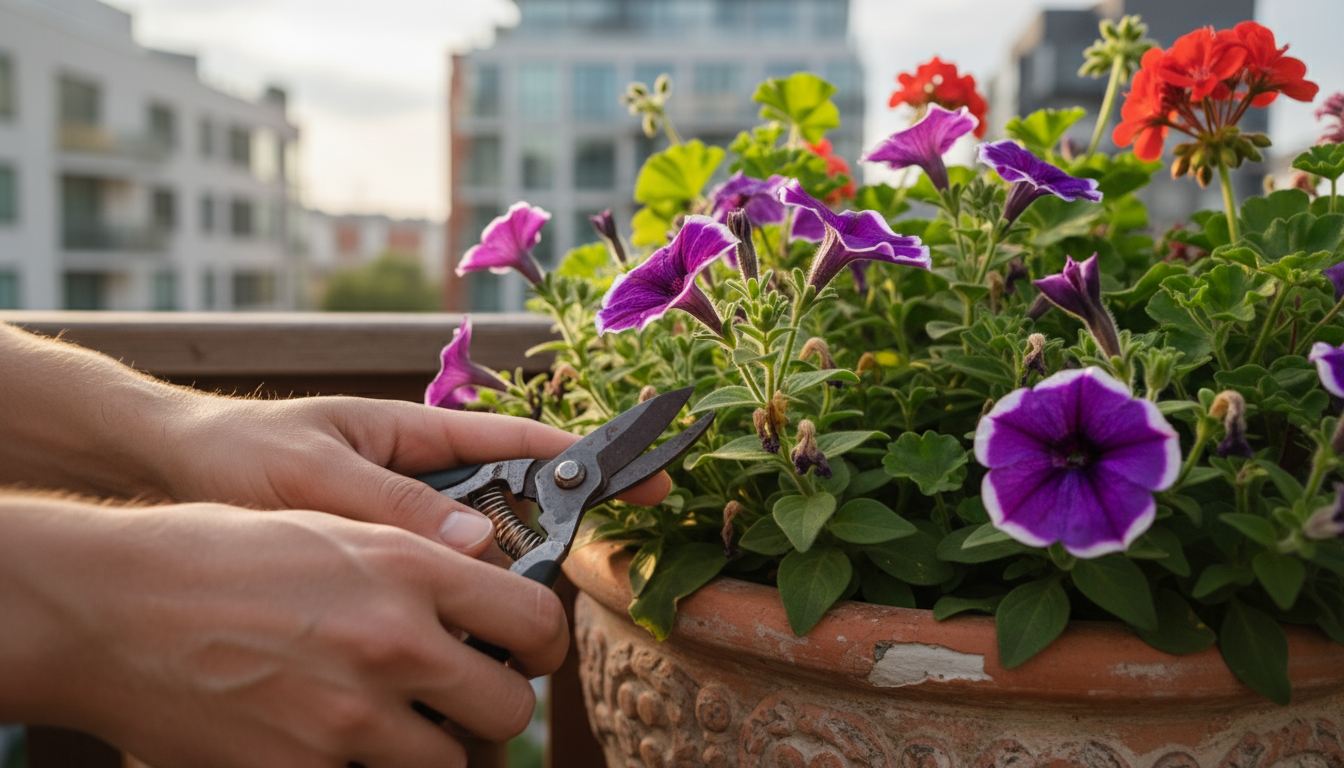
Impact on Plant Health
When plants are packed too closely together, they compete intensely for essential resources:
- Light: Taller or bushier plants can shade out smaller ones, depriving them of the sunlight they need for photosynthesis. This results in leggy, weak growth as plants stretch to reach light.
- Air Circulation: Dense foliage creates stagnant, humid conditions that are perfect breeding grounds for fungal diseases (like powdery mildew) and insect pests. Good airflow helps keep leaves dry and discourages disease.
- Nutrients: Each plant needs a certain amount of nutrients from the soil. Too many plants in one container or close together quickly deplete the available nutrients, leading to deficiencies for all.
- Water: Plants in crowded conditions compete for water, and it becomes difficult to ensure each plant receives adequate hydration. Some might be overwatered while others are underwatered.
- Root Space: Roots also need space to spread and absorb water and nutrients efficiently. Overcrowded roots become tangled and restricted, leading to stunted growth.
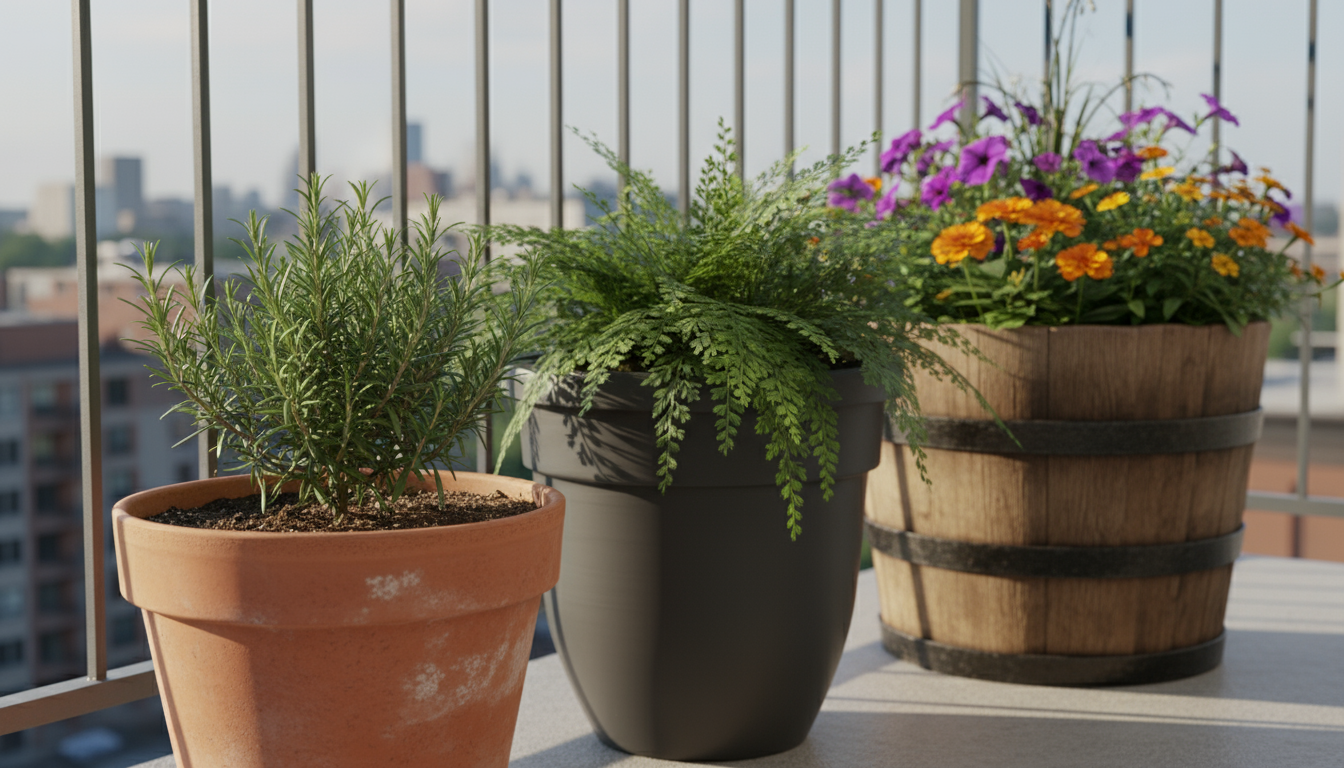
Quality Over Quantity
Resist the urge to buy every appealing plant at the nursery. Instead, focus on selecting a smaller number of plants that you truly love and that are well-suited to your balcony’s conditions. Give each plant the space it needs to thrive. A few healthy, productive plants are far more rewarding than a balcony full of struggling, stressed ones.
Consider your overall balcony aesthetic. An overcrowded space can look cluttered and messy, diminishing the peaceful vibe you are trying to create. A well-curated selection of plants, thoughtfully arranged, enhances the beauty and functionality of your balcony.
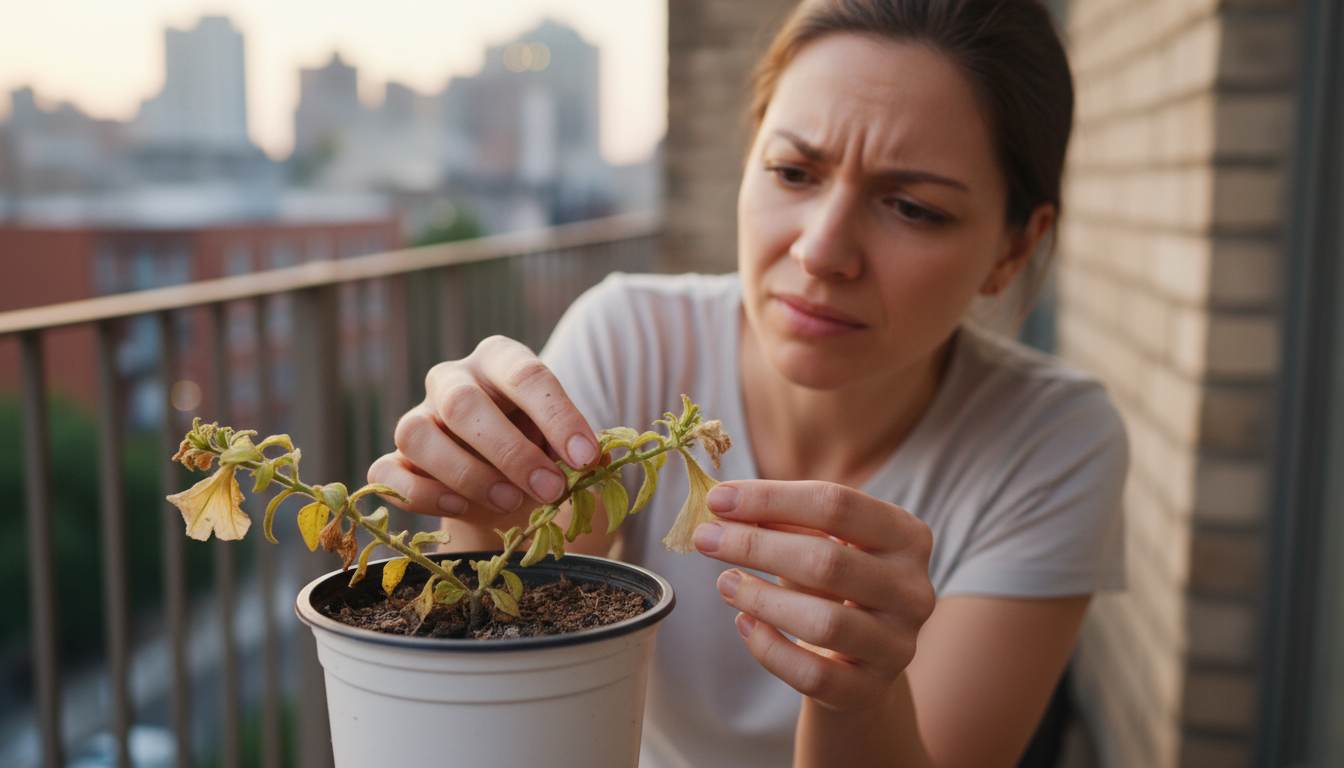
Maximizing Space with Vertical Solutions
If you genuinely want to grow a variety of plants in a small space, think vertically! Vertical gardening is an excellent solution for balconies, allowing you to increase your growing area without taking up precious floor space. Options include:
- Tiered Planters: These stacked planters hold multiple plants at different levels.
- Wall-Mounted Planters: Pockets or containers that attach directly to a wall or railing.
- Trellises and Cages: For vining plants like cucumbers, pole beans, or climbing flowers.
- Hanging Baskets: Utilize overhead space for flowers, herbs, or small trailing vegetables.
- Shelving Units: Sturdy shelves can hold multiple pots, organizing them neatly.
When implementing vertical solutions, remember to consider the weight limits of your balcony and the sun exposure at different heights. Taller plants or shelving might cast shadows on lower plants, impacting their light intake. Thoughtful planning prevents these balcony gardening mistakes.
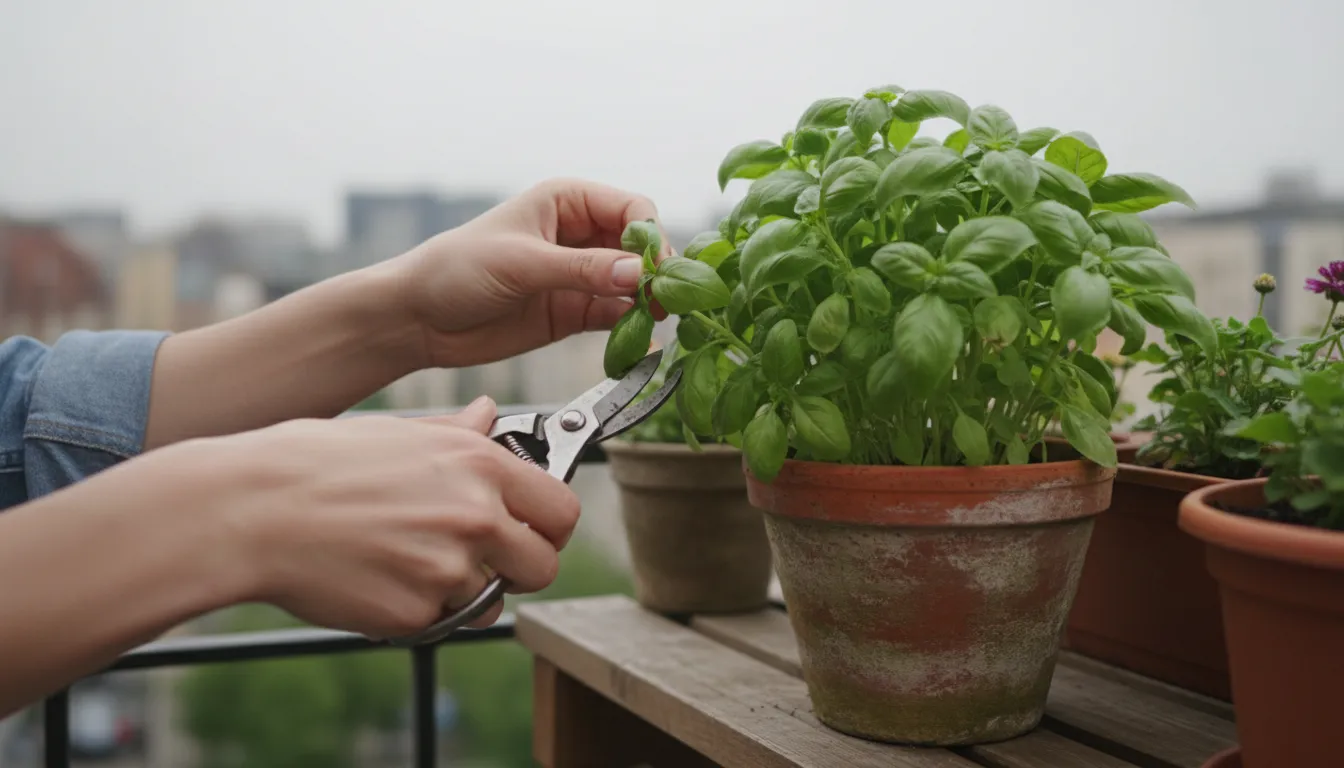
Skipping Essential Maintenance Tasks
Gardening is an ongoing process, not a one-time setup. Many beginner balcony gardeners overlook routine maintenance, leading to plants that perform poorly or look unkempt. Consistent, simple care prevents many container plant problems and keeps your balcony garden productive and beautiful.
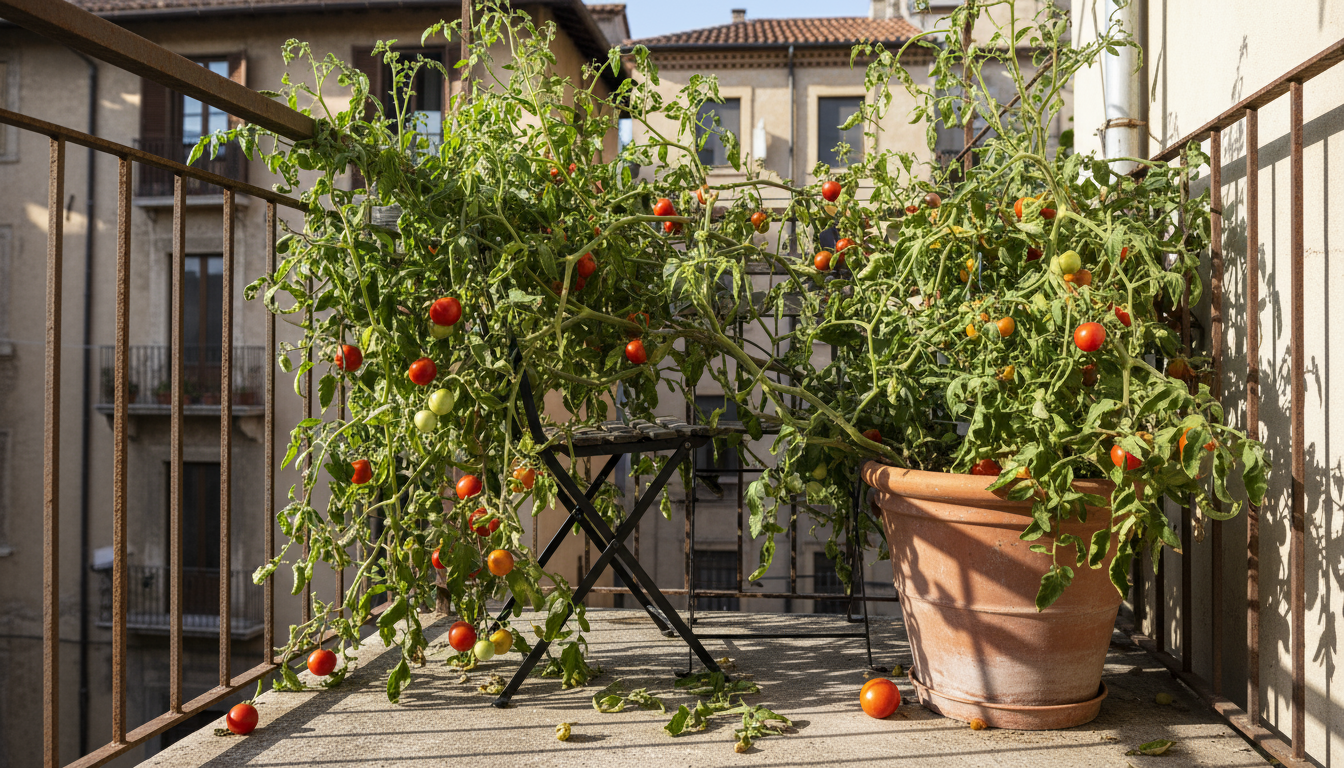
Pruning and Deadheading: The Art of Shaping and Encouraging Growth
Pruning involves removing specific parts of a plant, such as branches, buds, or roots. For balcony plants, pruning helps maintain a manageable size, improves air circulation, and encourages bushier growth. For example, pinching back the growing tips of basil or peppers encourages side branching rather than tall, leggy growth, leading to a more productive plant. Removing diseased or damaged leaves prevents the spread of issues and redirects the plant’s energy to healthy growth.
Deadheading is the act of removing spent (faded) flowers. Many flowering plants produce more blooms when deadheaded regularly. When a flower goes to seed, the plant’s energy shifts to seed production rather than making new flowers. By removing the spent bloom, you trick the plant into producing more flowers in an attempt to set seed. This also keeps your plants looking tidy and vibrant.
Make pruning and deadheading a weekly habit. It is a quick task that makes a significant difference in plant vigor and aesthetics.
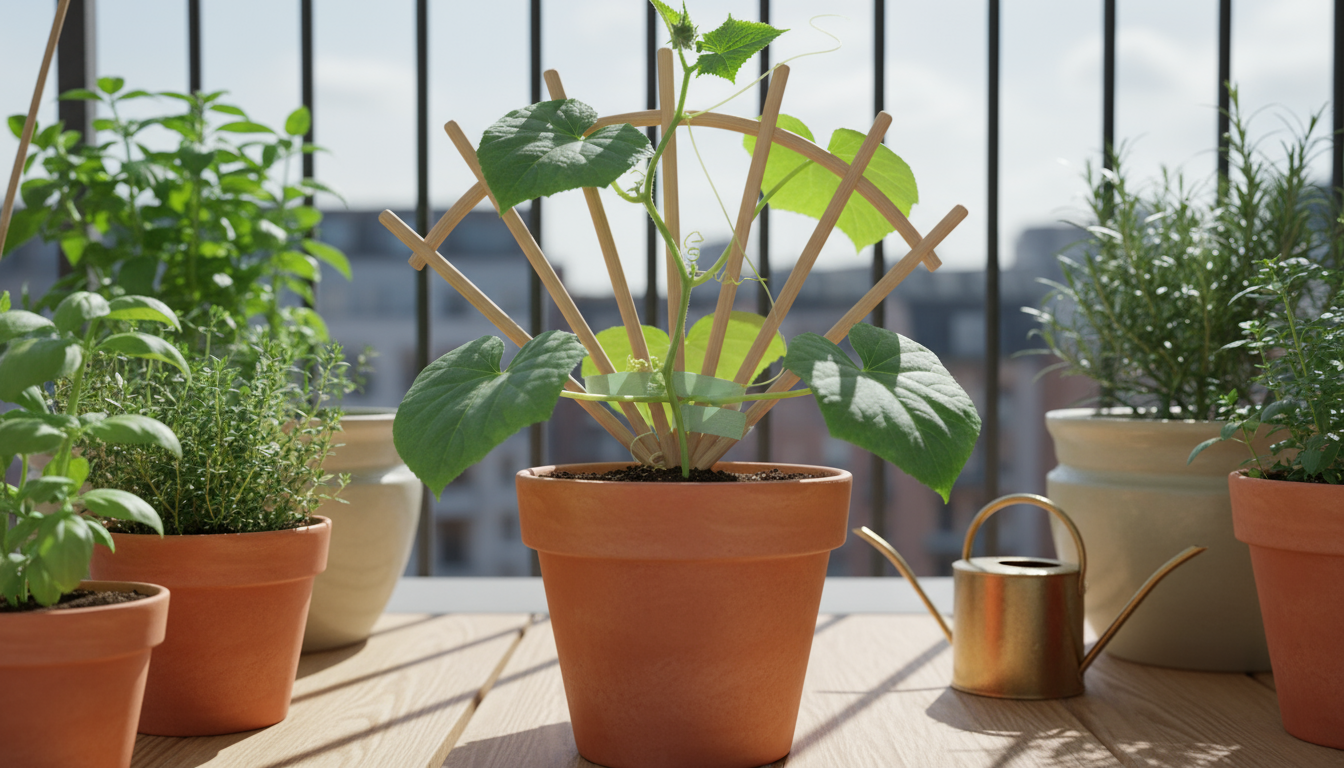
Repotting: Giving Roots Room to Grow
As plants grow, their roots eventually fill their container. This root-bound condition, mentioned earlier, stresses plants and limits their ability to absorb water and nutrients. Many annuals might not need repotting, but perennials, shrubs, and even some vigorous annuals grown in smaller pots will benefit from moving to a larger container. This is particularly true for plants you plan to keep for multiple seasons.
Signs your plant needs repotting include:
- Roots emerging from the drainage holes.
- Water quickly running through the pot without soaking in.
- Stunted growth despite adequate watering and feeding.
- The plant seems top-heavy and tips over easily.
When repotting, choose a container that is only one size larger than the current one (e.g., from an 8-inch to a 10-inch pot). Use fresh potting mix. The best time to repot is generally in spring before new growth begins, but you can do it anytime a plant shows signs of being root-bound. For very large plants that are difficult to repot, you can “top-dress” by scraping off the top few inches of old soil and replacing it with fresh potting mix and compost to replenish nutrients.
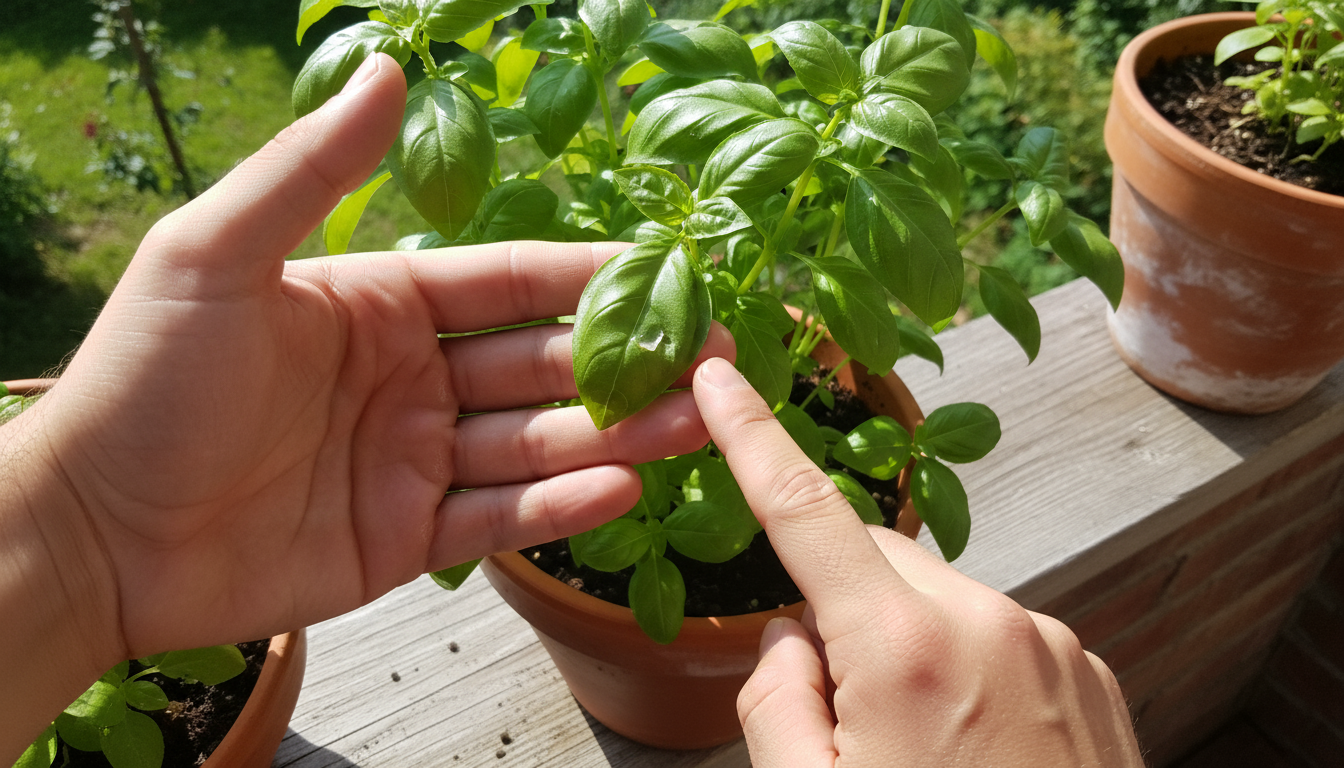
Providing Support for Vining Plants
Many popular balcony plants, like tomatoes, cucumbers, peas, beans, and certain flowers, are vining or climbing. Failing to provide adequate support is a common mistake that leads to weak stems, broken branches, and fruits that sit on the ground, making them susceptible to pests and rot. Install support structures like stakes, trellises, or cages when the plants are small, so their roots are not disturbed later.
As the plants grow, gently tie them to the support structure using soft ties, plant clips, or strips of old cloth. Avoid using thin wire or string that can cut into stems as the plant grows thicker.
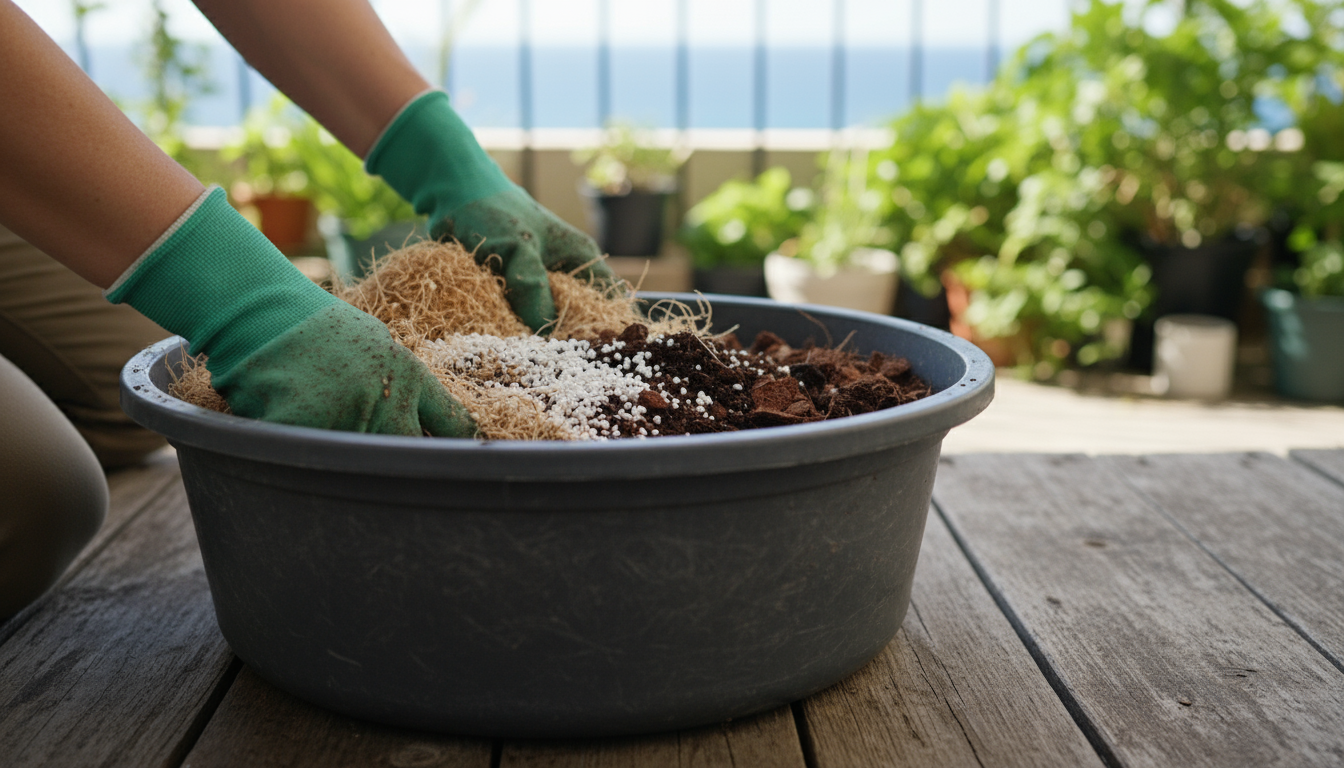
Cleaning and Tidiness
A tidy balcony garden is a healthy balcony garden. Regularly sweep up fallen leaves, spent blooms, and spilled soil. This not only keeps your space looking good but also removes potential hiding spots for pests and prevents the spread of diseases. Clean your tools after each use to prevent transferring pathogens between plants. Keeping your gardening area clean and organized reduces many balcony gardening mistakes.

Failing to Plan for Seasonal Changes
Balcony gardens are particularly exposed to the elements, and neglecting to account for seasonal changes is a common oversight for beginners. The conditions that make your balcony perfect for summer annuals can become hostile in winter, and vice versa. Understanding your local climate and planning ahead prevents significant container plant problems and plant loss.
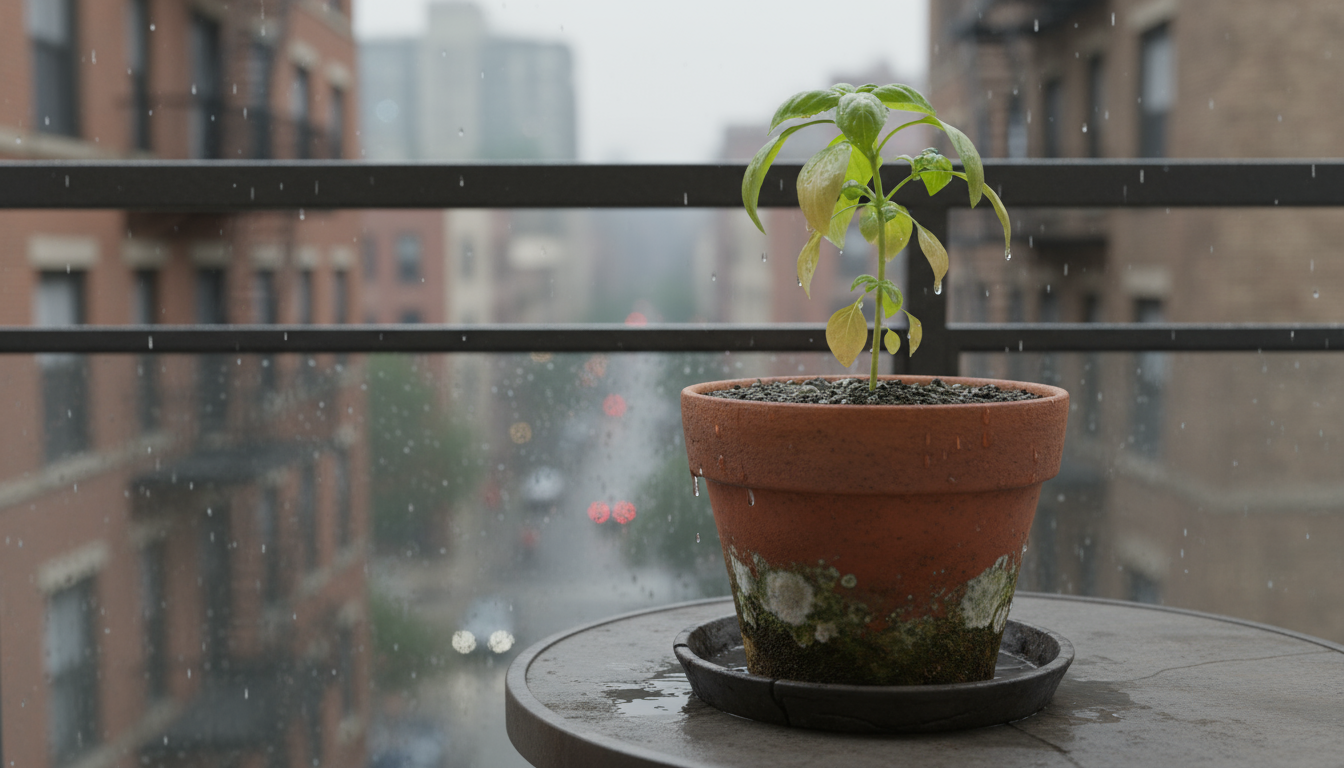
Understanding Your Hardiness Zone
Your USDA Plant Hardiness Zone (or equivalent local system) is a critical piece of information. This zone tells you which plants are likely to survive the winter in your area. For balcony gardening, however, even a plant rated for your zone might struggle in a container. Container plants are more vulnerable to cold than in-ground plants because their roots are not insulated by the surrounding soil. The air circulates around the container, exposing the roots to much lower temperatures. A general rule is to assume your container plants are hardy to one or two zones colder than your actual zone.
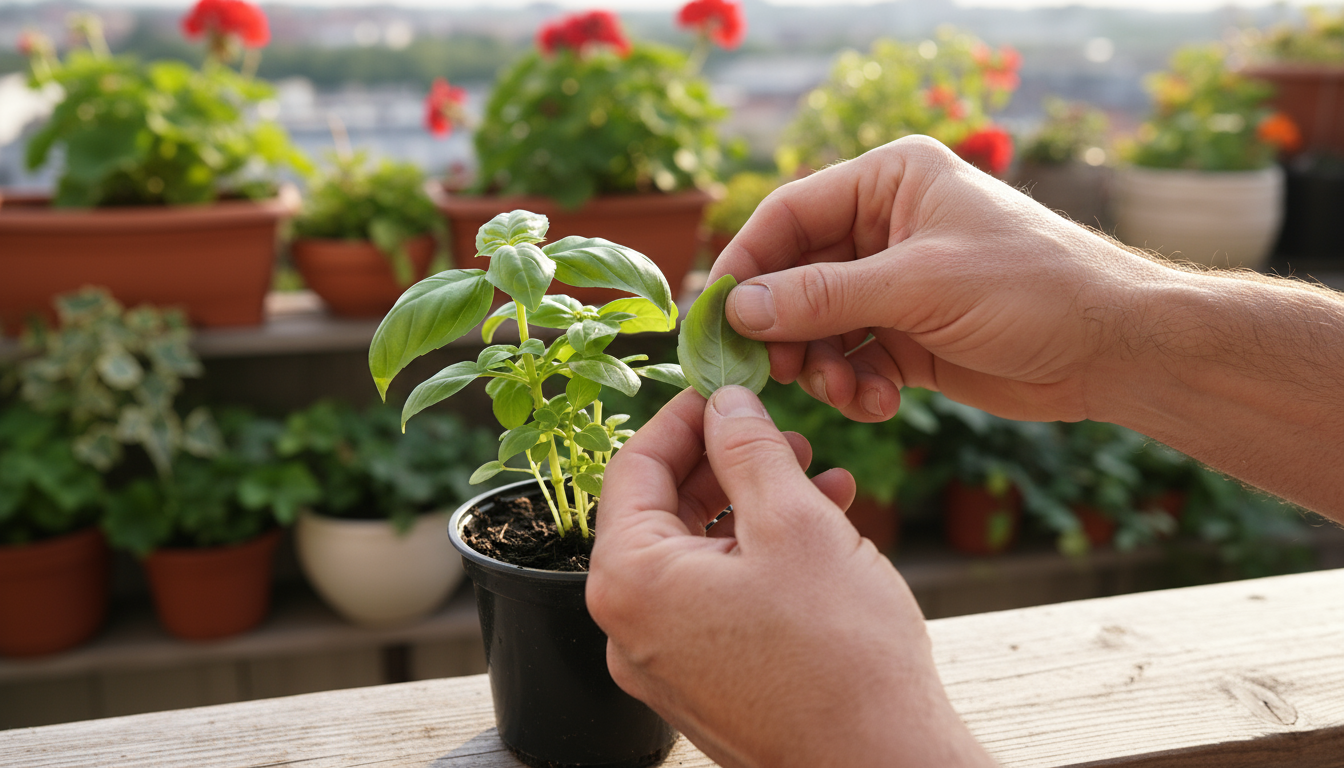
Preparing for Winter and Frost
If you live in a region with freezing winters, you must decide what to do with your tender plants. Common balcony gardening mistakes include leaving tender perennials out to freeze. Options include:
- Bringing Indoors: Many plants, especially tropical perennials, herbs like rosemary, or small citrus trees, can be brought indoors to overwinter. Provide them with adequate light, and reduce watering and feeding, as their growth slows down.
- Providing Frost Protection: For borderline hardy plants or mild frosts, you can cover plants with burlap, frost blankets, or old sheets. Move containers close to a warm wall or into a sheltered corner. Grouping pots together can also offer some mutual insulation.
- Insulating Containers: Wrap containers with burlap, bubble wrap, or blankets to protect roots from freezing. You can also place smaller pots inside larger, insulated containers.
- Accepting Annual Status: Many plants are simply annuals in temperate climates. Embrace their life cycle, enjoy them through the season, and plan to replace them next spring.
Drain any irrigation systems and store empty containers or clean them to prevent damage and disease. Empty plastic containers can crack when left filled with frozen soil.
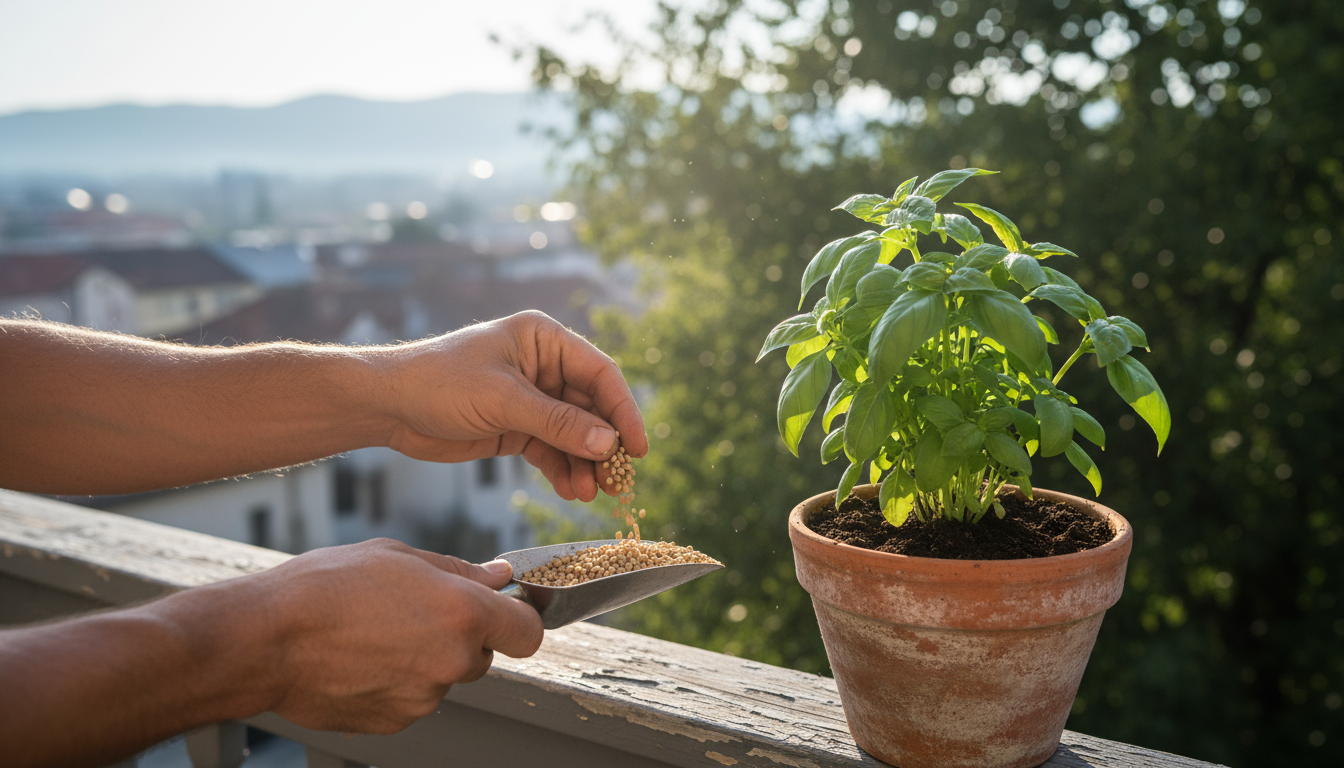
* Soaking up some balcony sunshine with these vibrant portulaca beauties!
* Keeping our colorful portulaca happy and hydrated on this shady balcony.
* A little afternoon watering makes these portulaca pop!
Managing Summer Heat Stress
Just as cold is a threat, extreme summer heat can also devastate balcony plants. Intense sun, high temperatures, and radiated heat from concrete surfaces can cause significant stress. Signs of heat stress include wilting (even with adequate water), leaf scorch (brown, crispy edges), and slowed growth or flowering.
To combat summer heat, consider:
- Strategic Watering: Water early in the morning before the heat sets in. You may need to water twice a day in peak summer.
- Providing Shade: Use shade cloths, umbrellas, or move heat-sensitive plants to shadier spots during the hottest part of the day.
- Light-Colored Containers: These reflect heat, keeping roots cooler than dark-colored pots.
- Mulch: A layer of mulch (shredded bark, straw, or even pebbles) on top of the soil helps retain moisture and insulate roots from heat.
- Choosing Heat-Tolerant Plants: Select varieties known to thrive in hot conditions, such as portulaca, purslane, certain herbs, and many Mediterranean plants.
Seasonal planning extends the life and productivity of your balcony garden, ensuring you avoid unnecessary container plant problems.
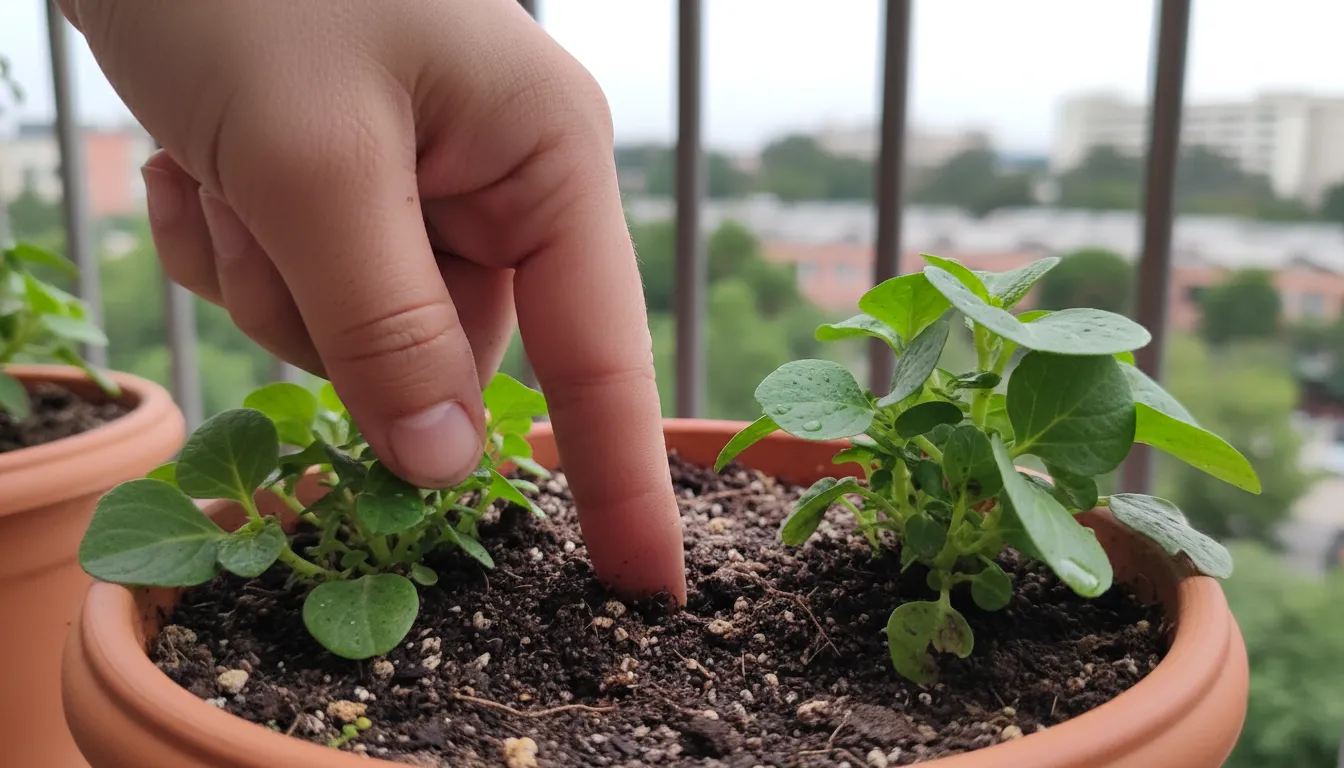
Frequently Asked Questions
How do I know if my plant needs water?
The most reliable method is the “finger test.” Stick your finger about two inches deep into the soil. If the soil feels dry at that depth, it is time to water. If it still feels moist, wait. You can also lift smaller pots; if they feel surprisingly light, they likely need water. Alternatively, a moisture meter provides a quick reading of soil dampness.
Can I use garden soil in my balcony containers?
No, you should never use garden soil in containers. Garden soil is too dense and compacts easily in pots, leading to poor drainage and suffocated roots. Always use a high-quality potting mix, which is formulated for container growing with ingredients that provide aeration, drainage, and moisture retention.
What are the easiest plants for a beginner balcony gardener?
For beginners, consider resilient plants that are forgiving of minor mistakes. Herbs like basil, mint, chives, and rosemary are generally easy. Edibles such as cherry tomatoes (dwarf varieties), lettuce, radishes, and bush beans are also good choices. For flowers, try marigolds, petunias, nasturtiums, or pansies, matching them to your balcony’s specific light conditions.
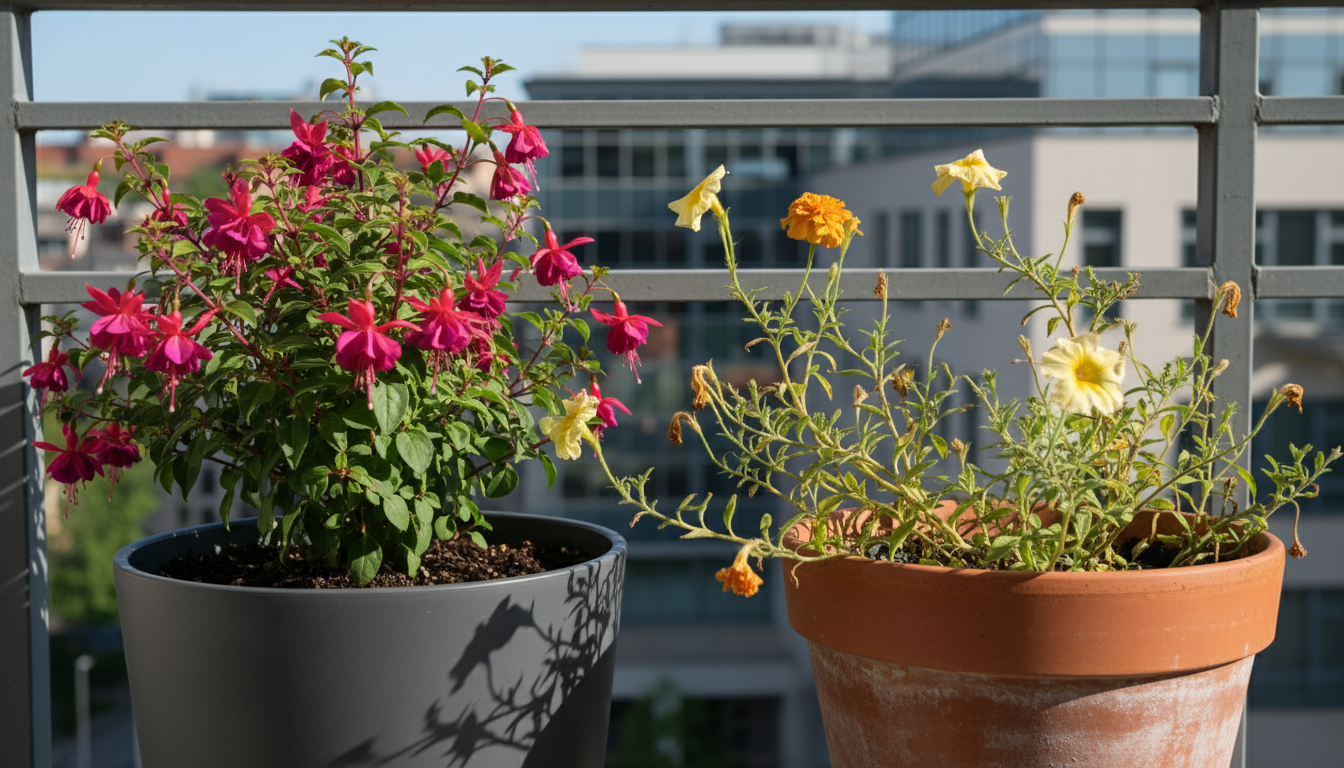
How do I deal with strong winds on my balcony?
To combat strong winds, use heavy, sturdy containers that resist tipping. Place plants closer to a solid wall or railing for shelter. Consider installing a trellis or screen as a windbreak. Choose plants with flexible stems and compact growth. Avoid tall, top-heavy plants in very exposed locations.
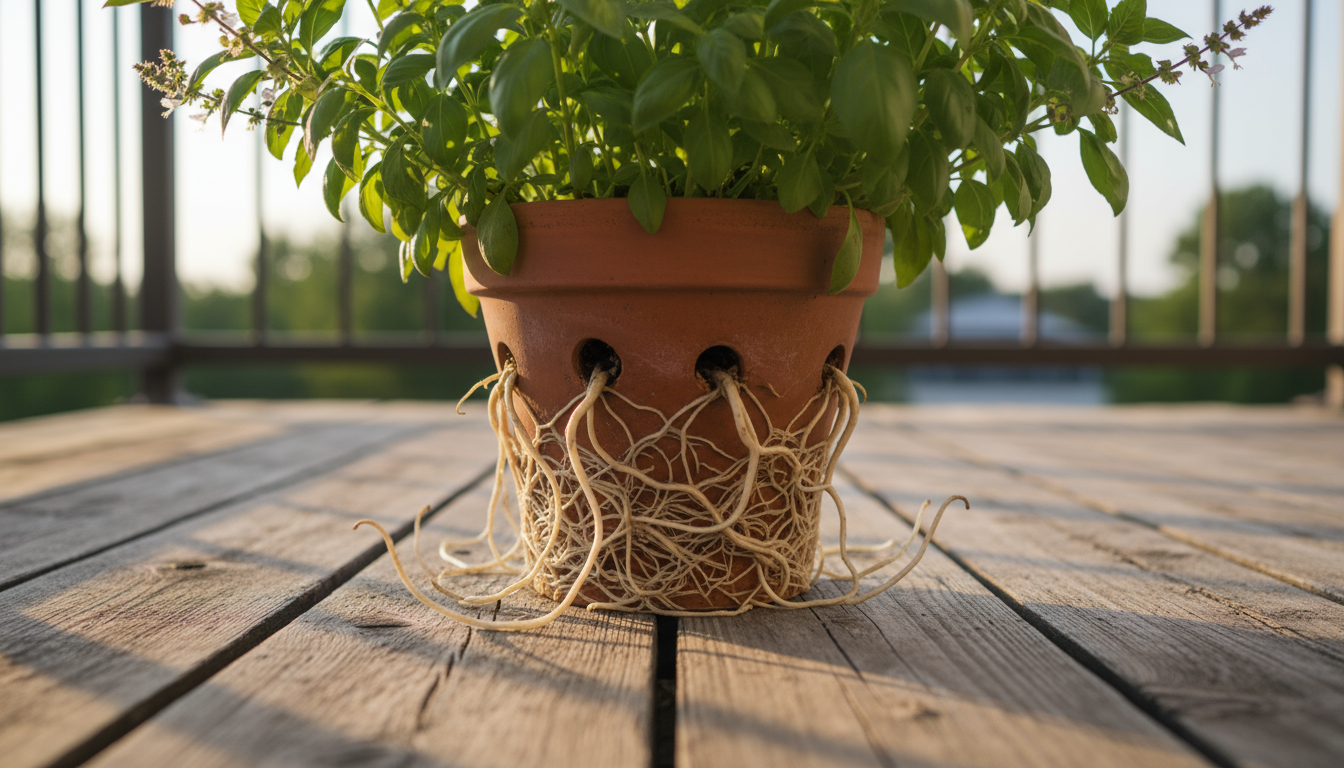
When should I repot my container plants?
Repot your container plants when you notice signs they are root-bound: roots emerging from drainage holes, stunted growth despite adequate care, or the plant drying out very quickly. The best time to repot is typically in the spring before active growth begins, but you can repot any time a plant shows these distress signals, choosing a pot that is only one size larger than the current one.
For trustworthy gardening information, visit: The Xerces Society for Invertebrate Conservation, International Society for Horticultural Science (ISHS) and Plantlife (UK). These organizations provide expert, research-based advice for gardeners at all levels.
Disclaimer: This article is for informational purposes only and is not a substitute for professional gardening advice. Always consult local extension services or horticulture experts for region-specific guidance.

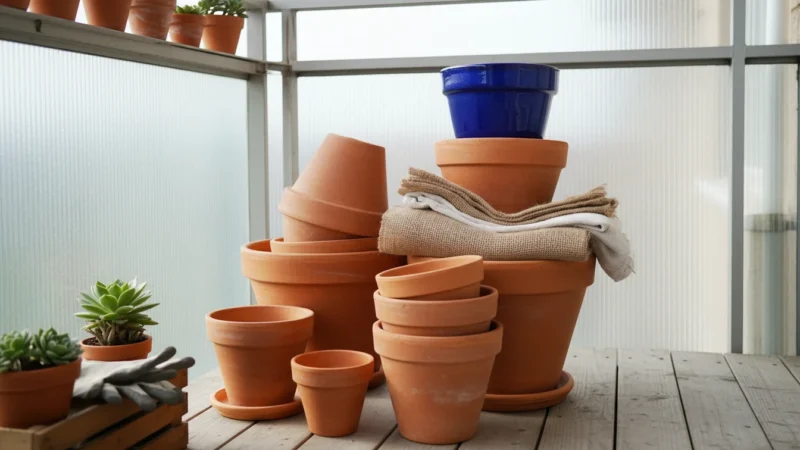
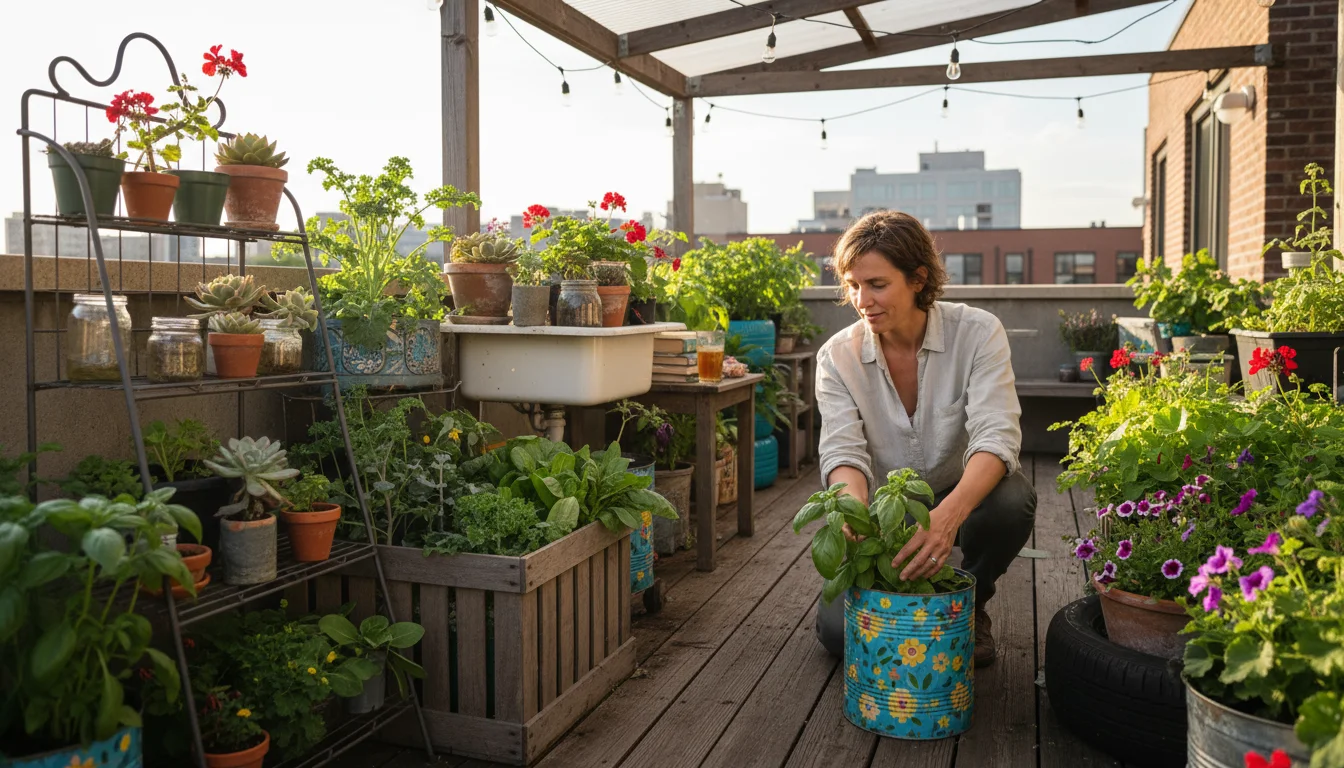
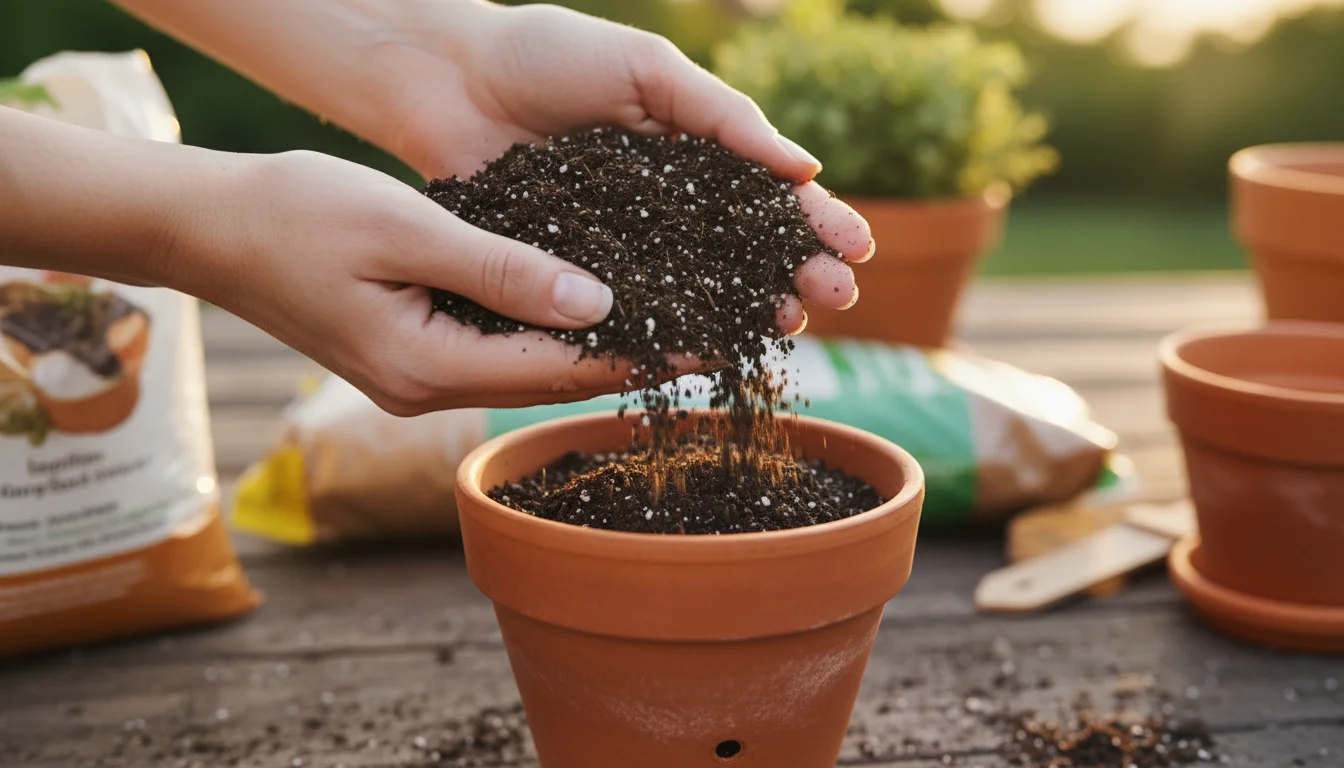
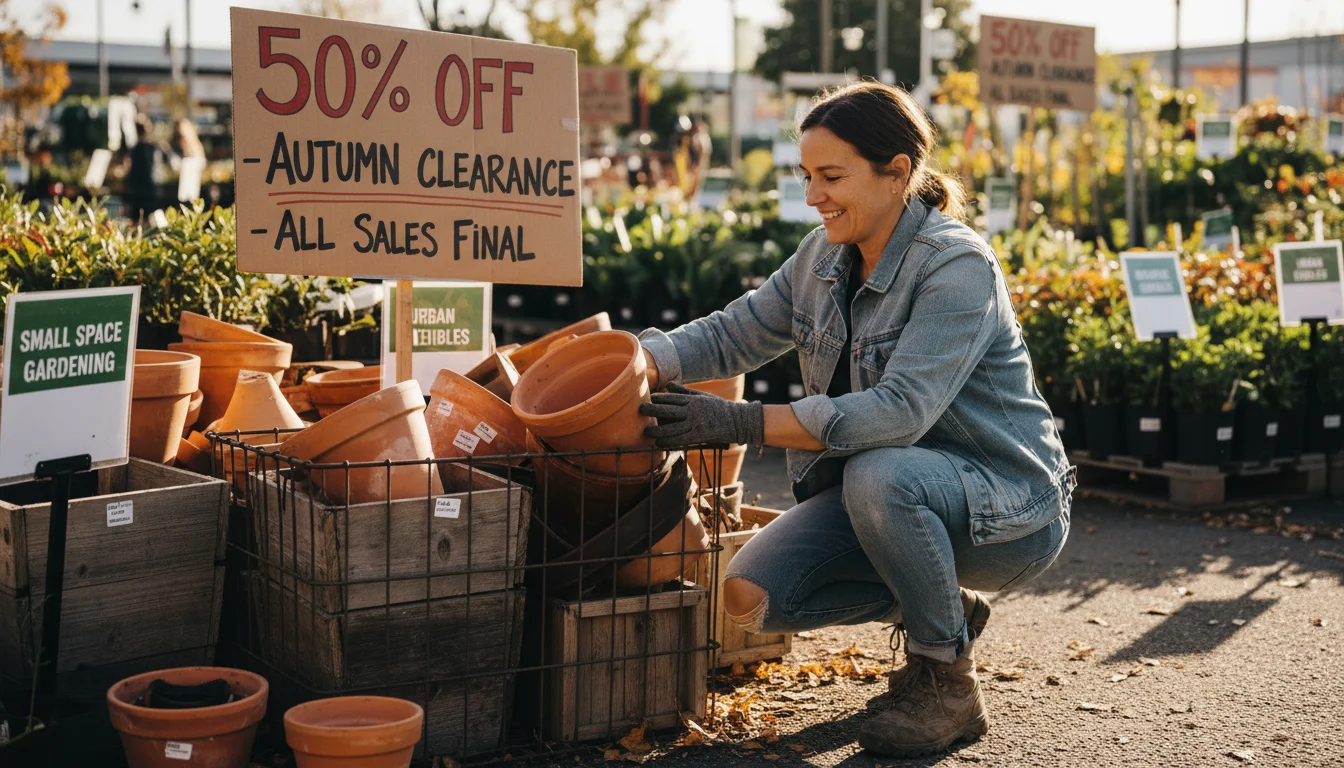
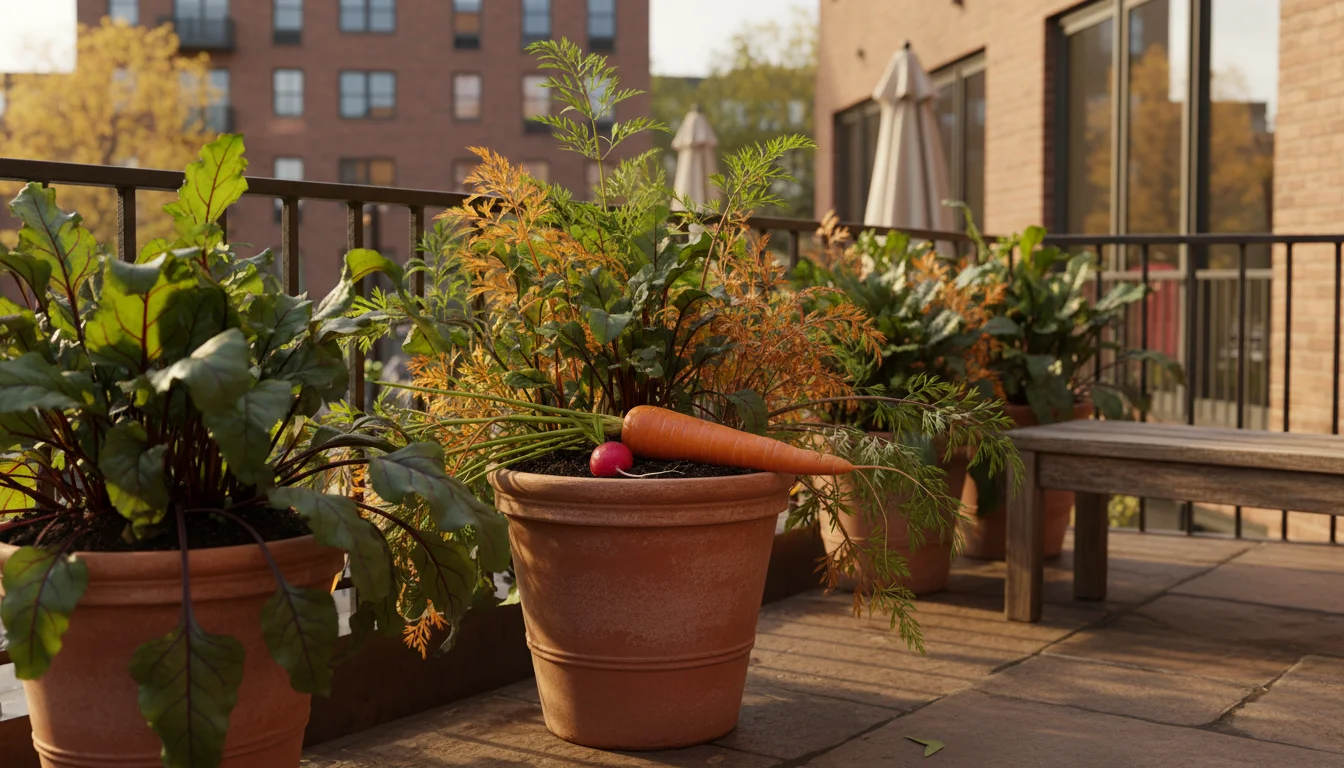
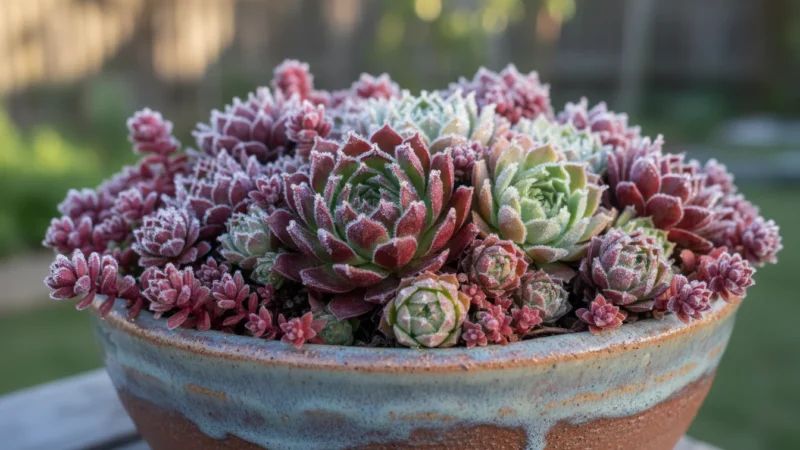
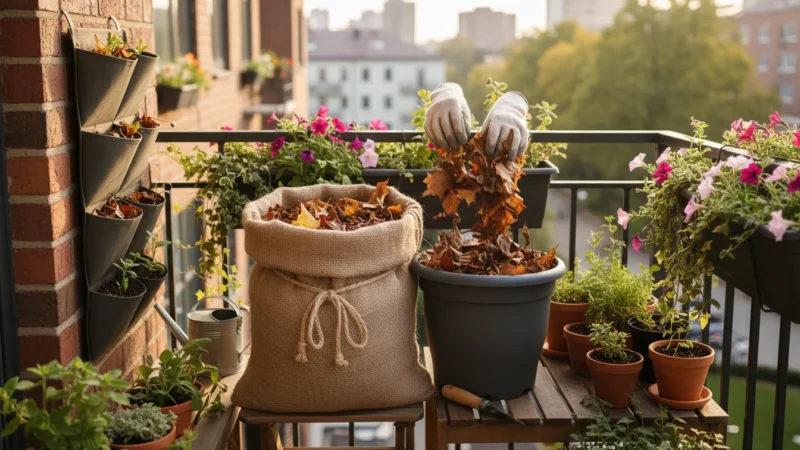
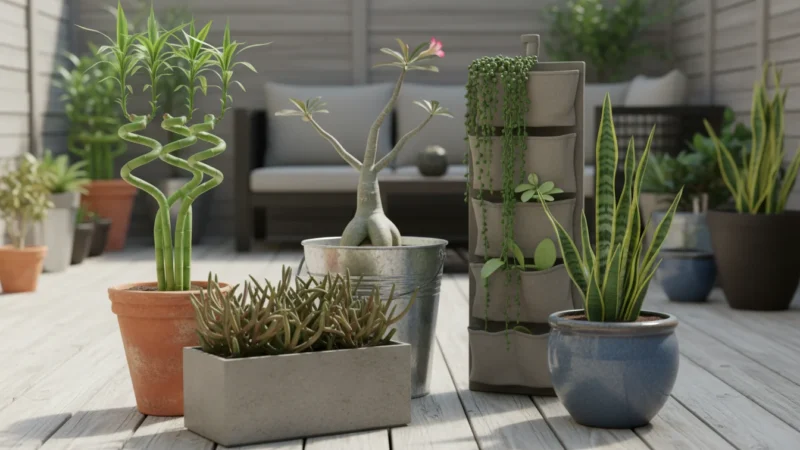
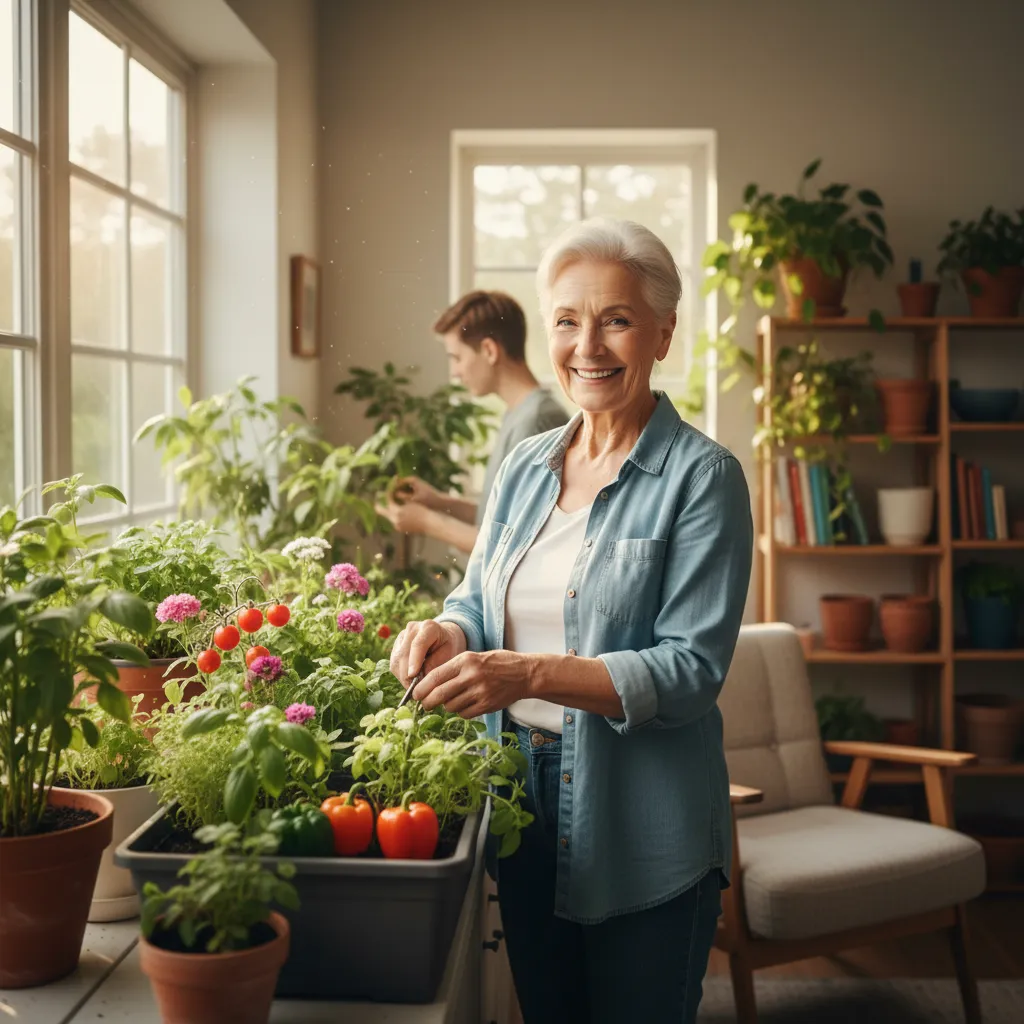
Leave a Reply